
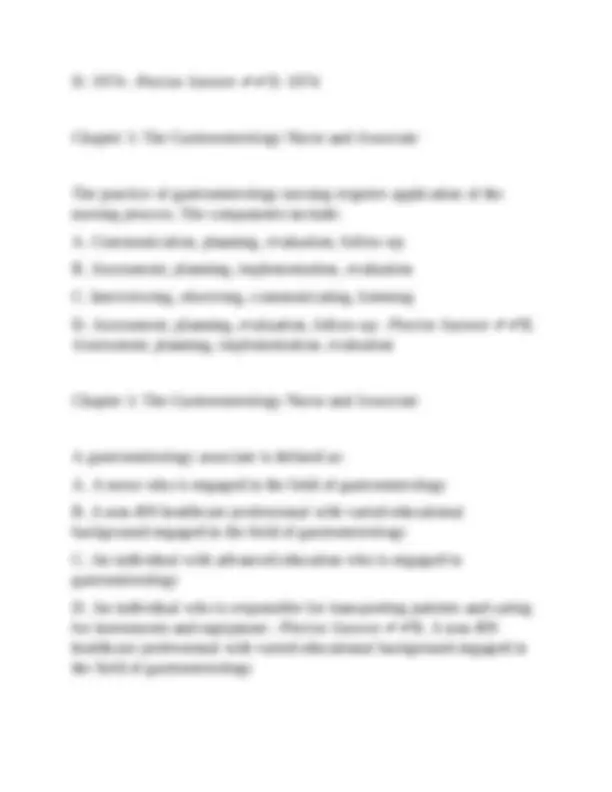
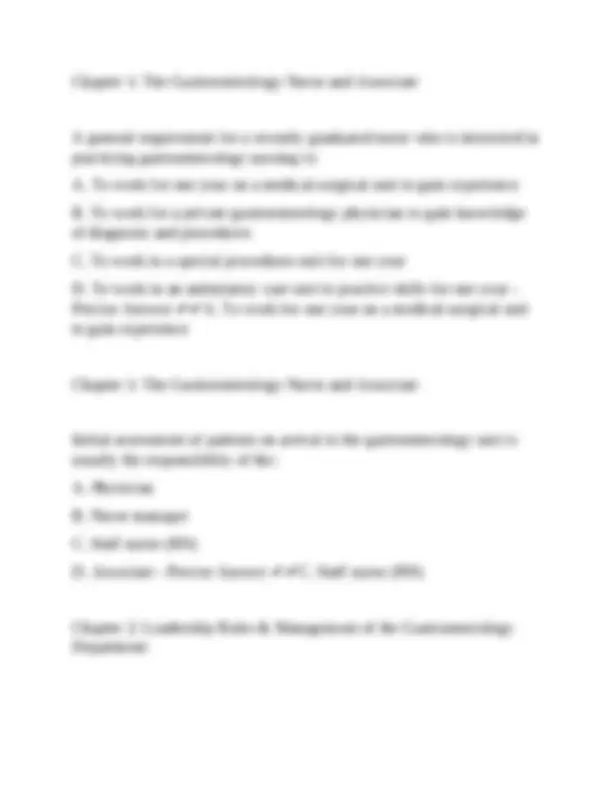
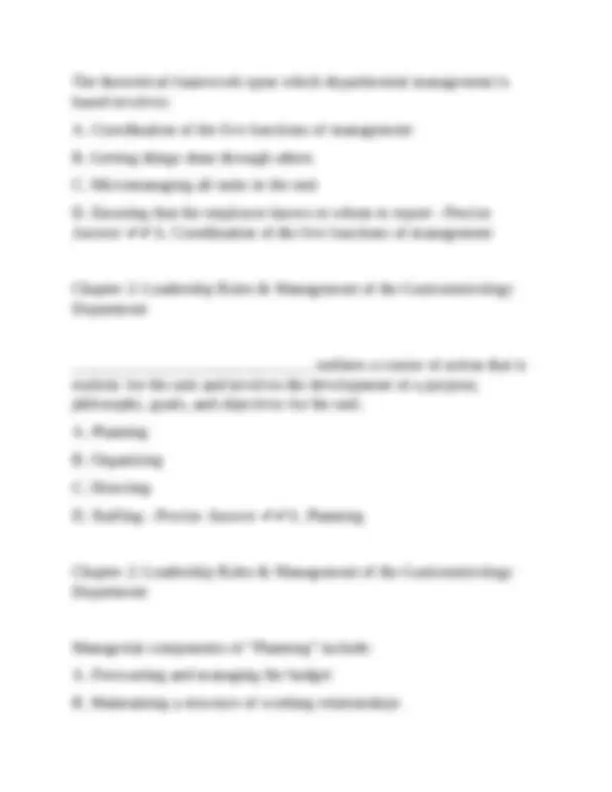
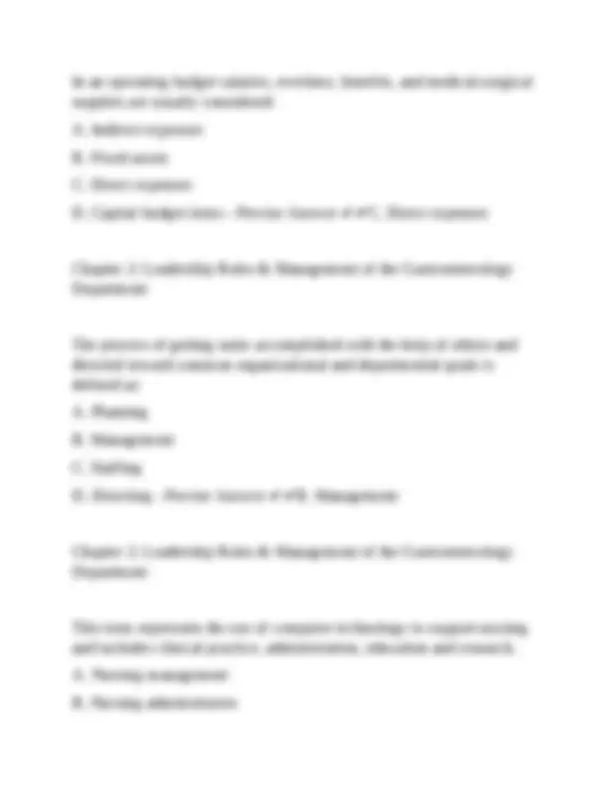
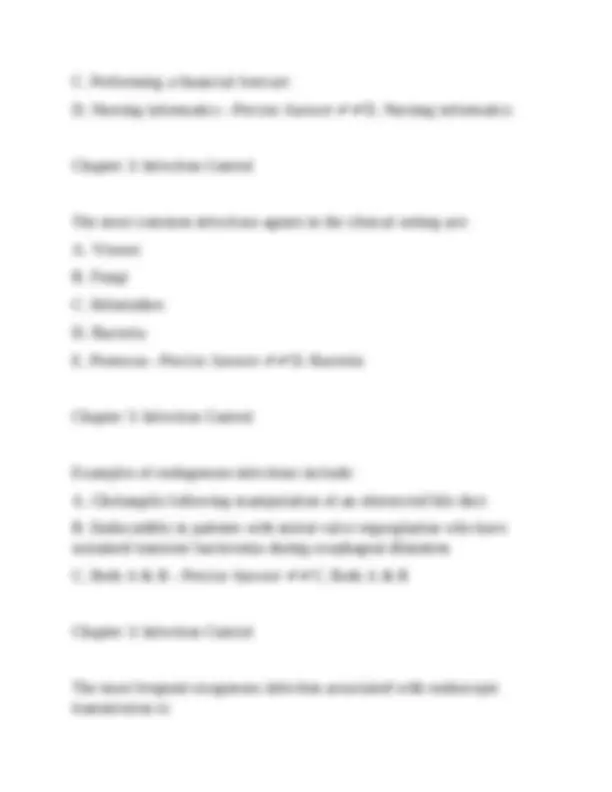
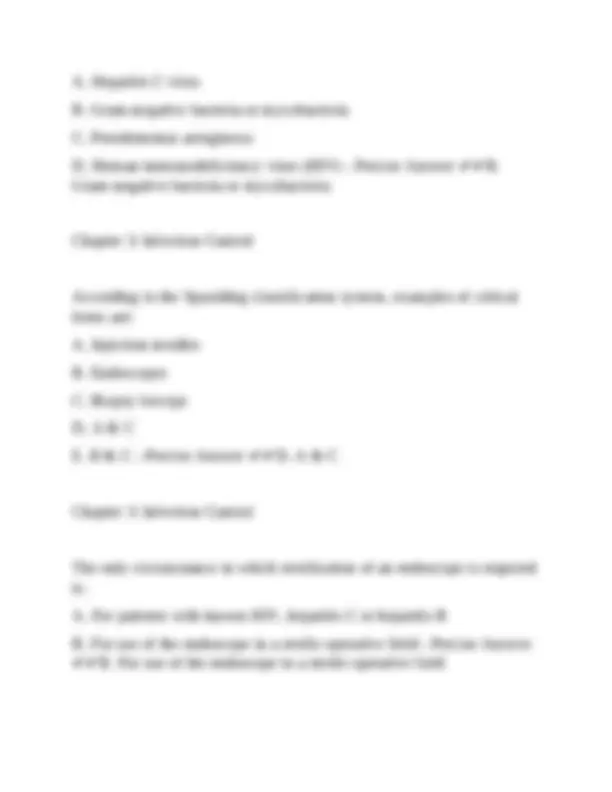
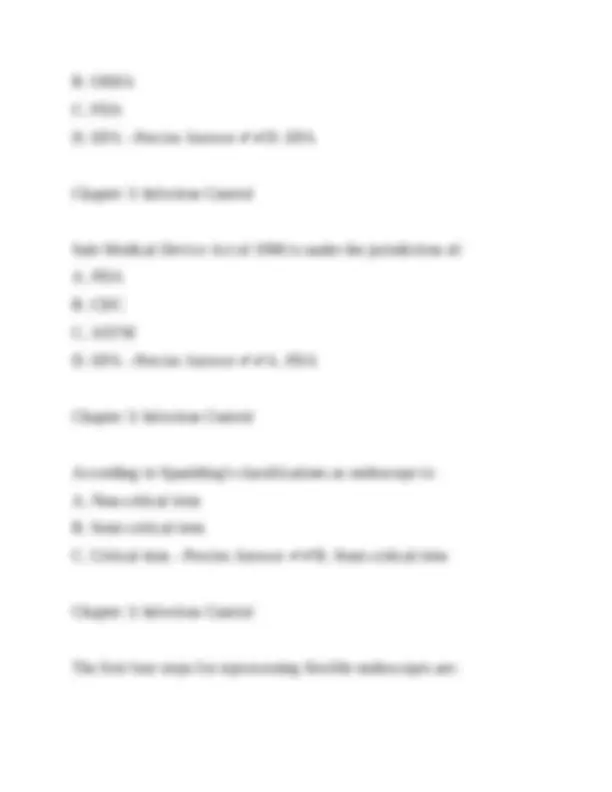
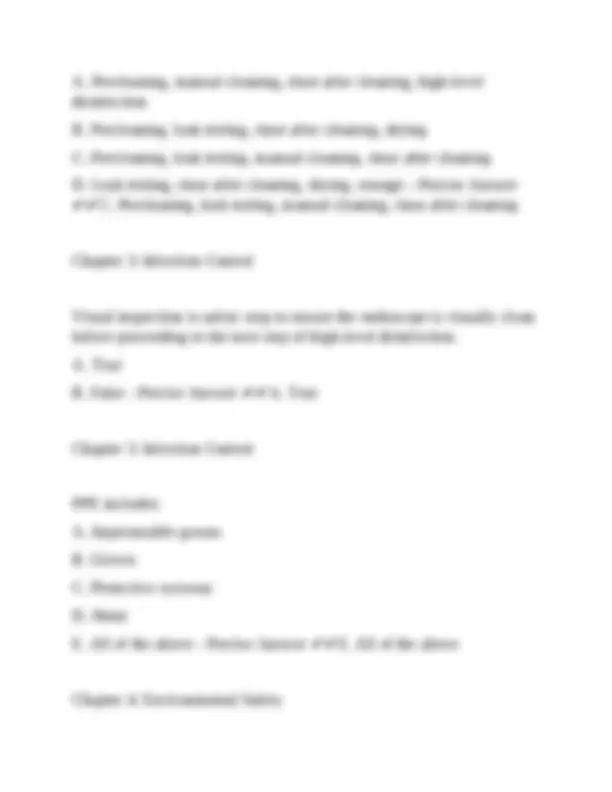
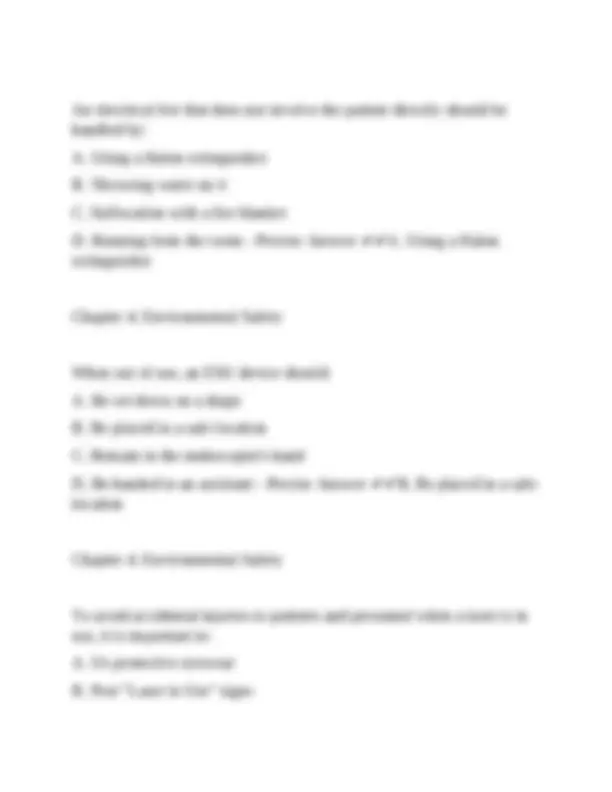
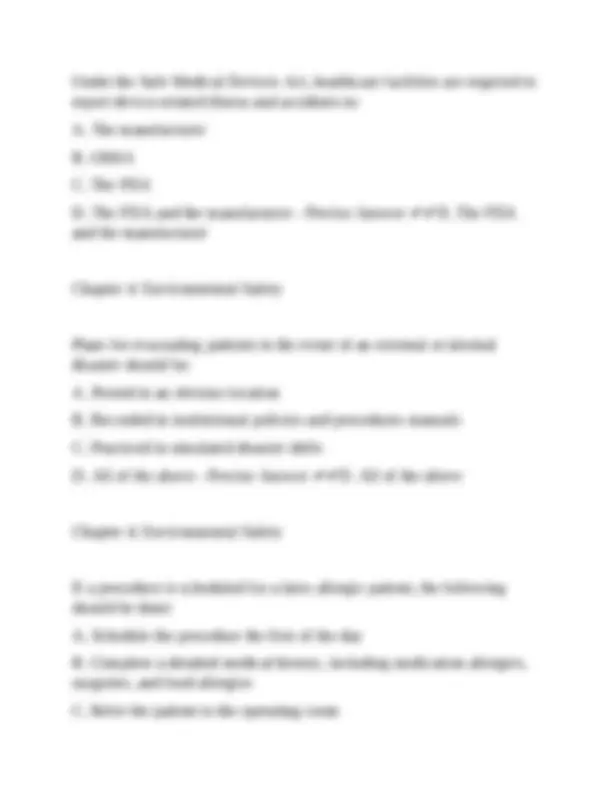
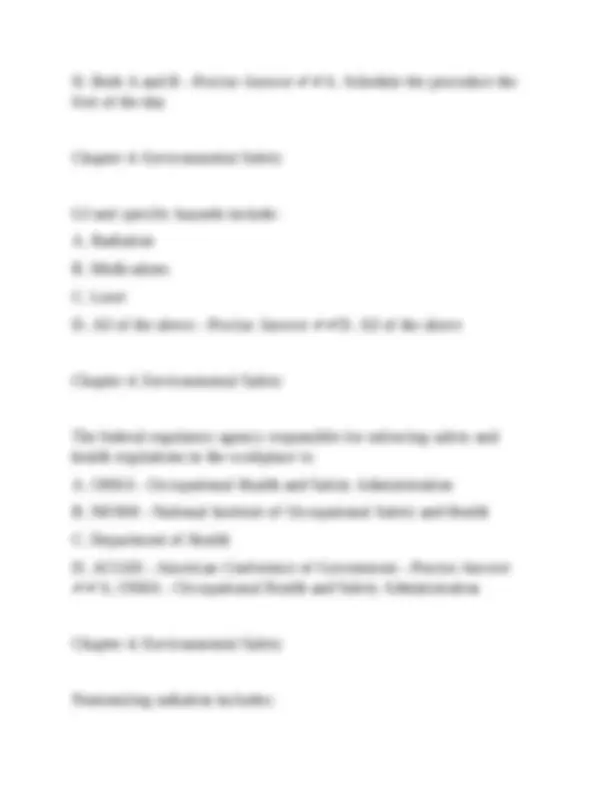
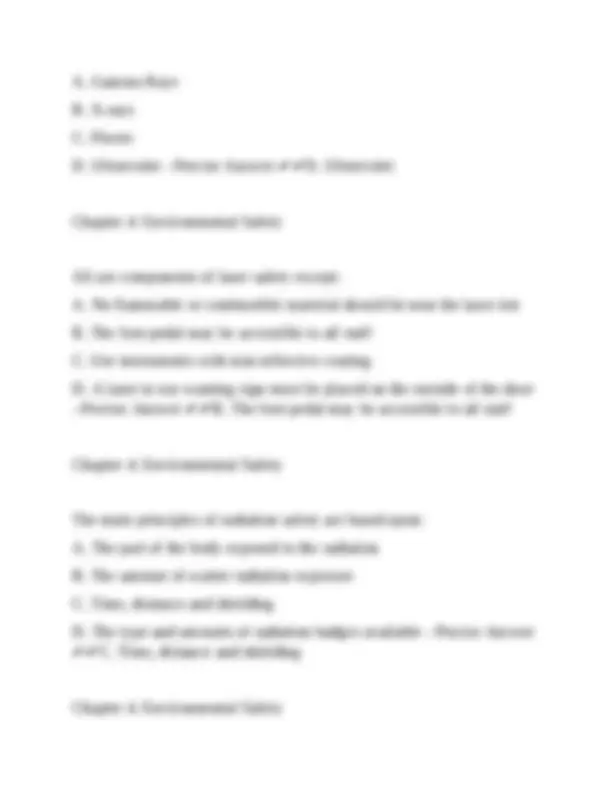
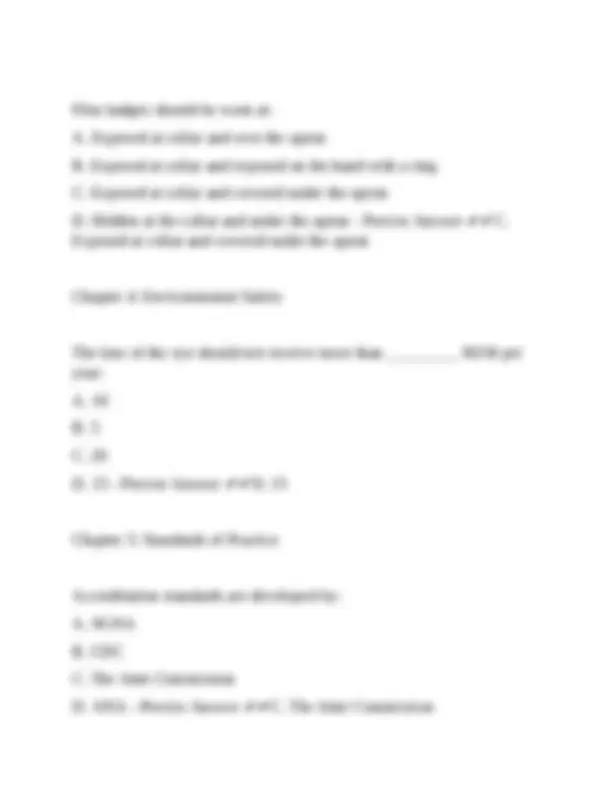
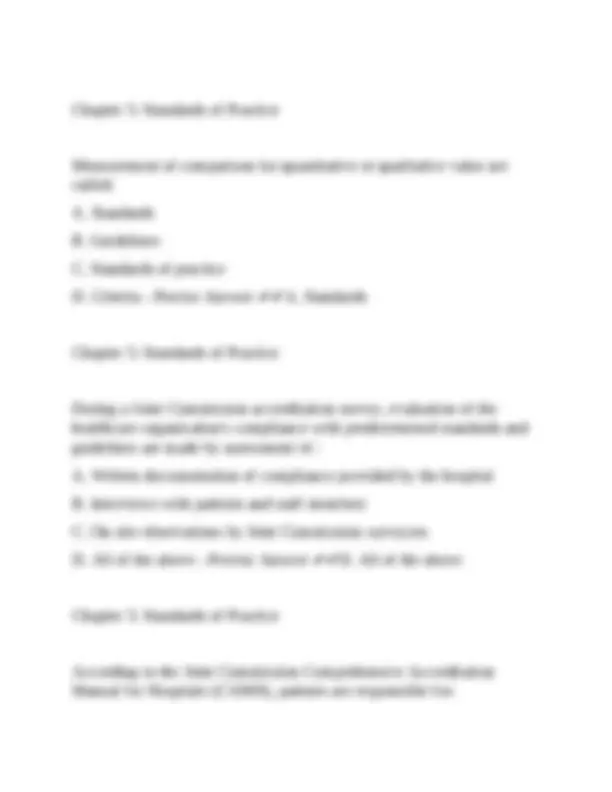
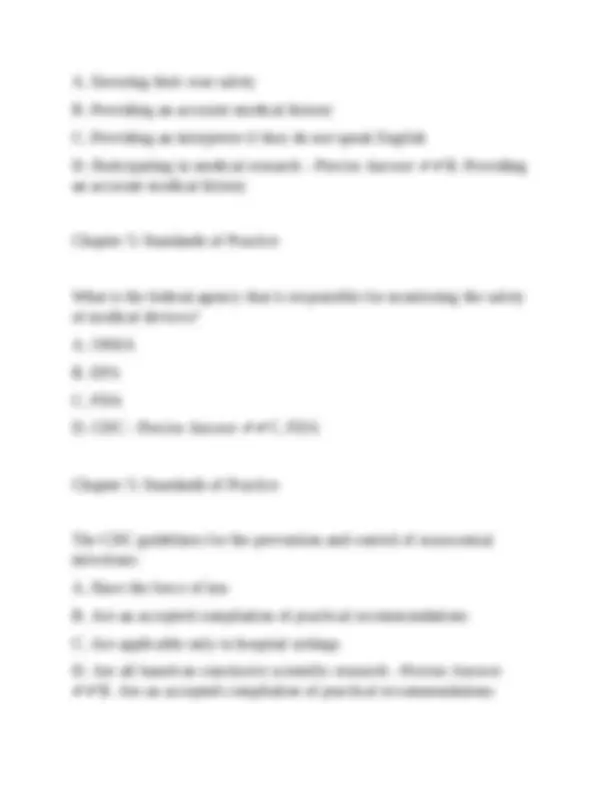
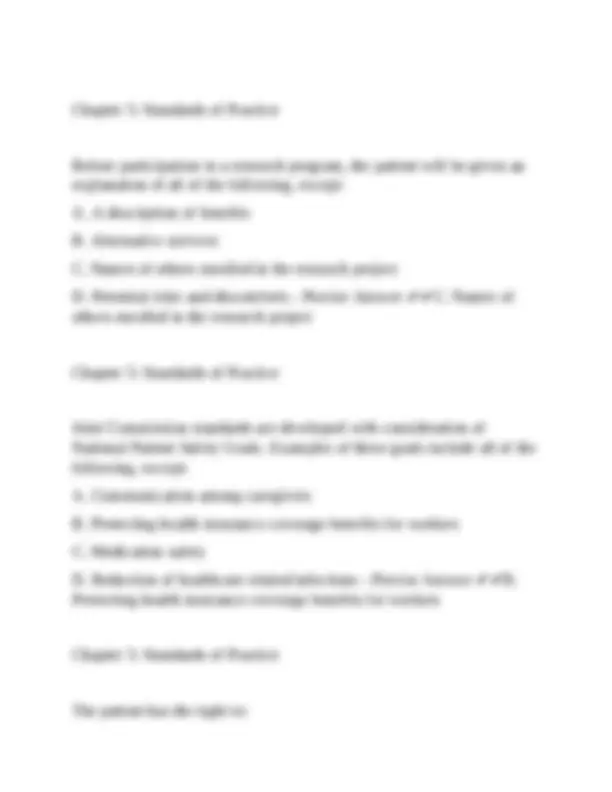
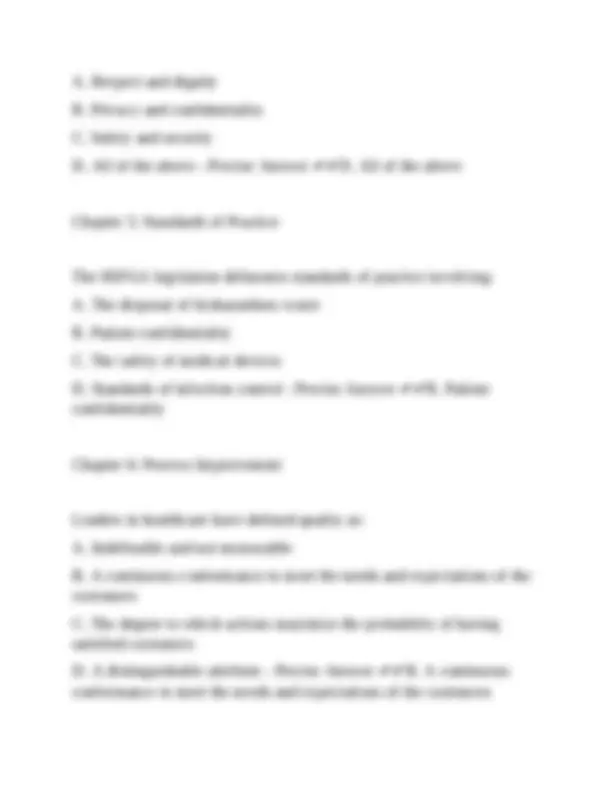

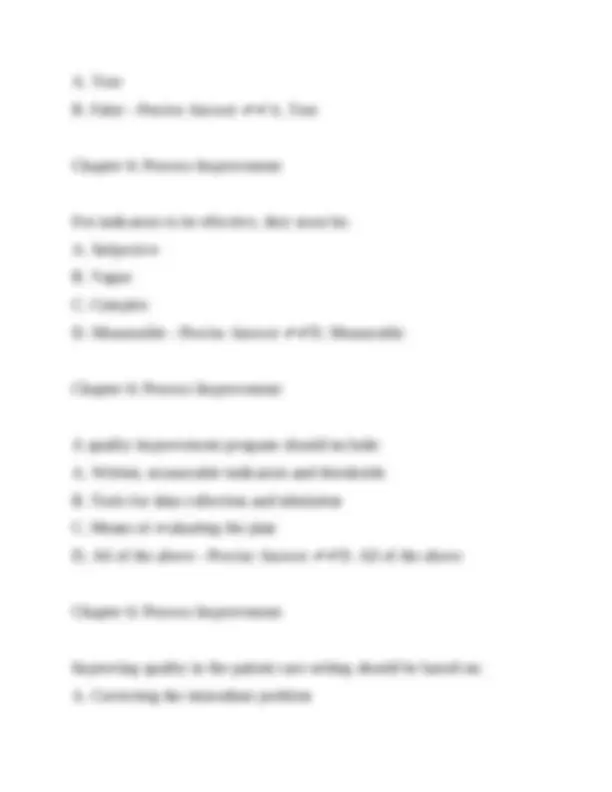
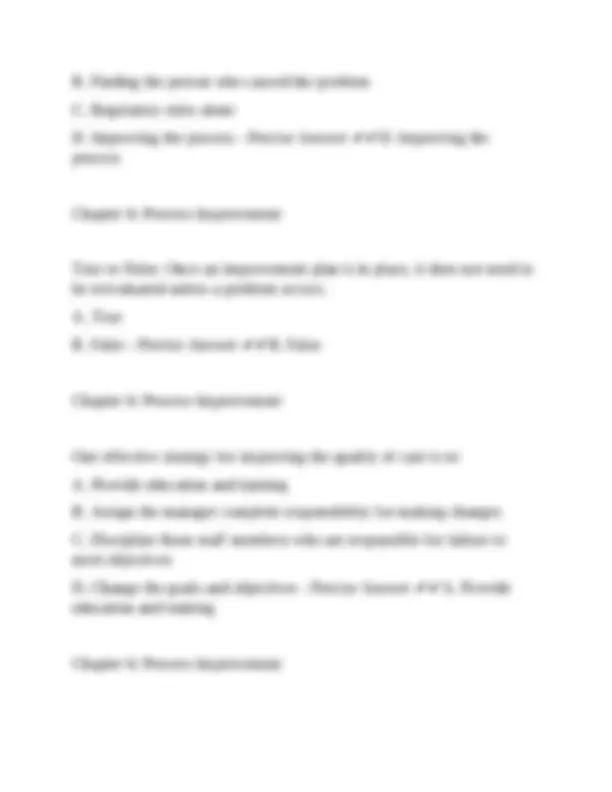
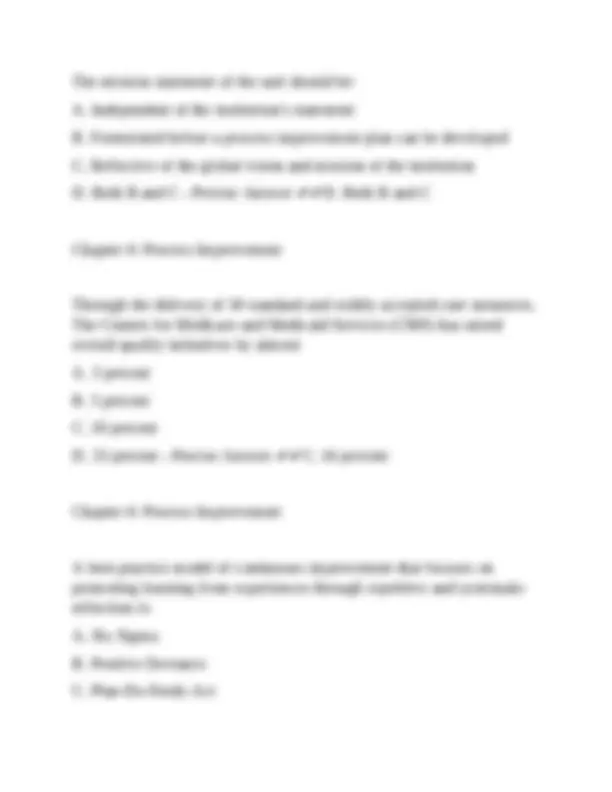
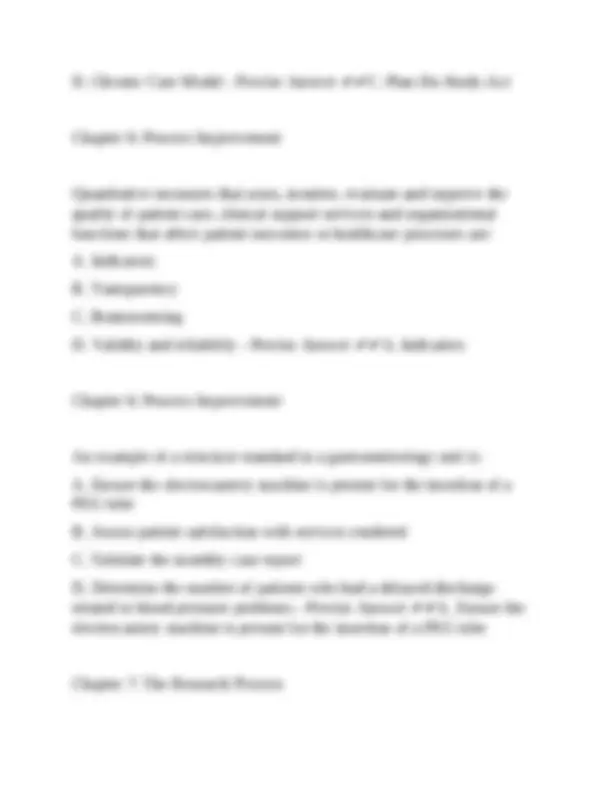
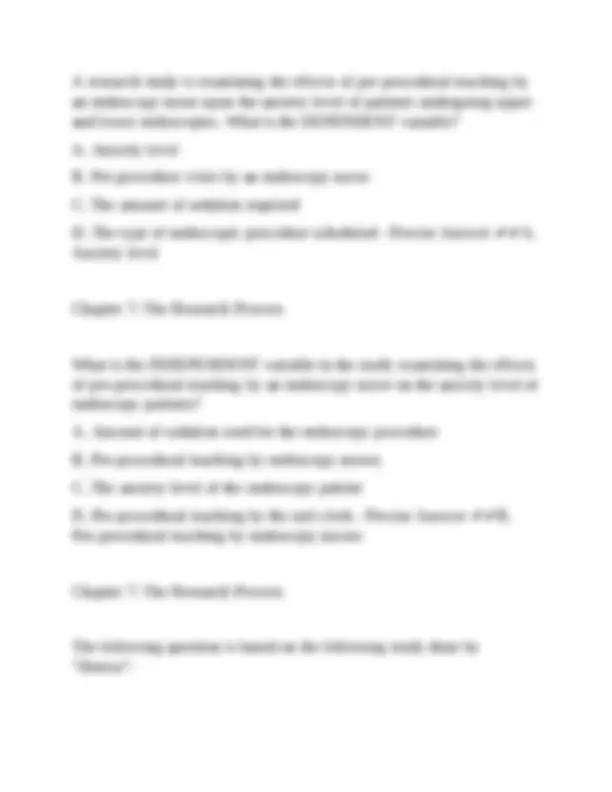
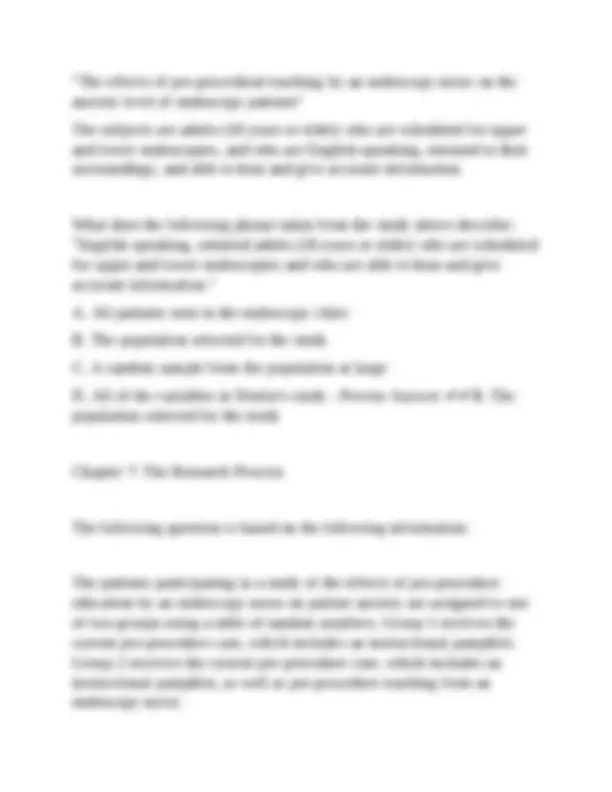
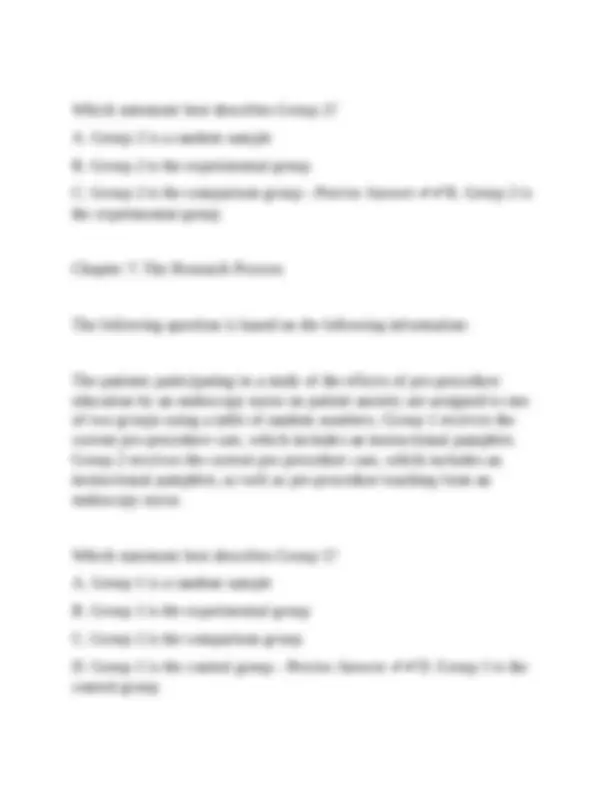
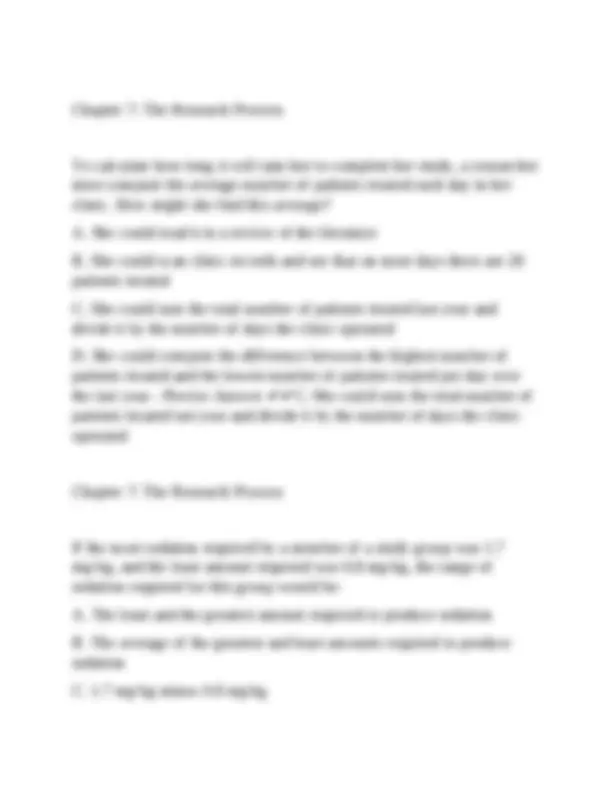
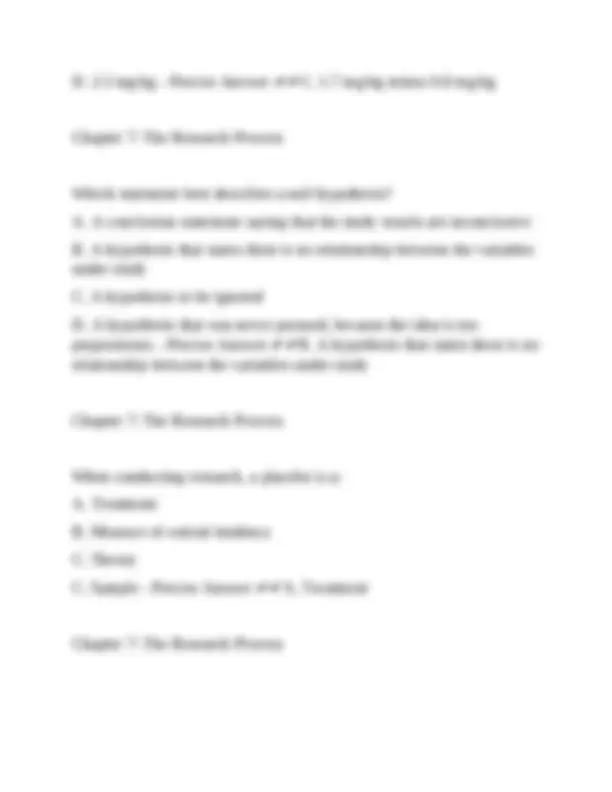
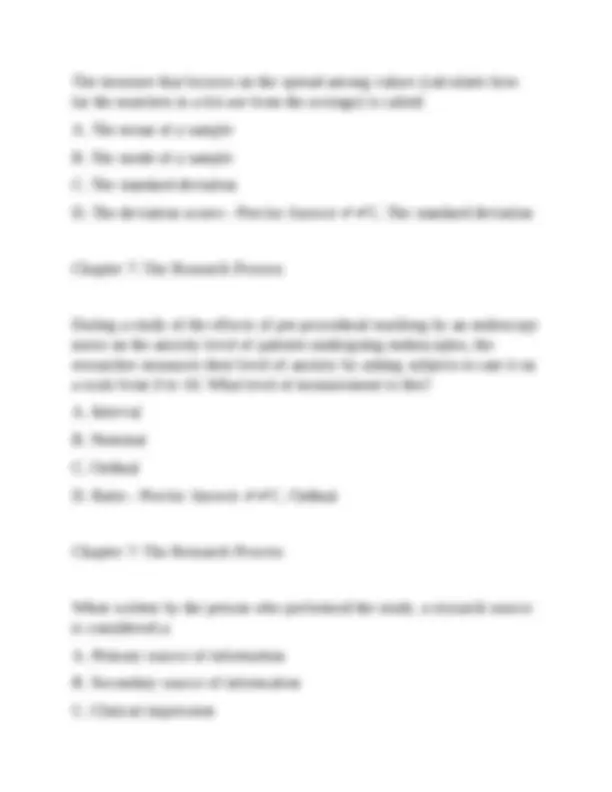
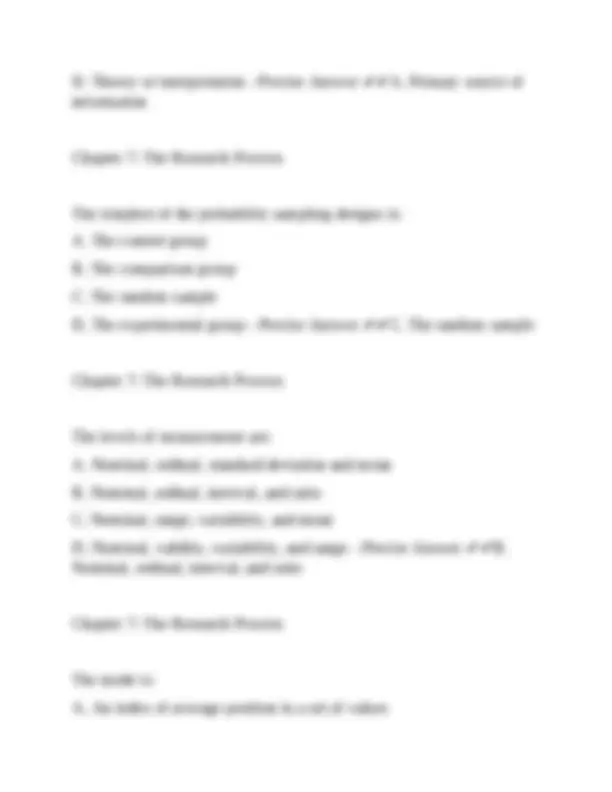
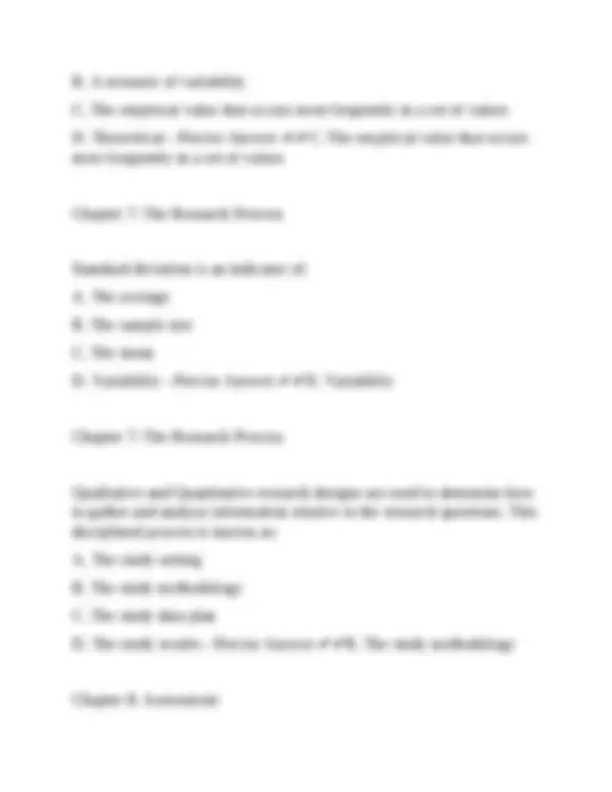
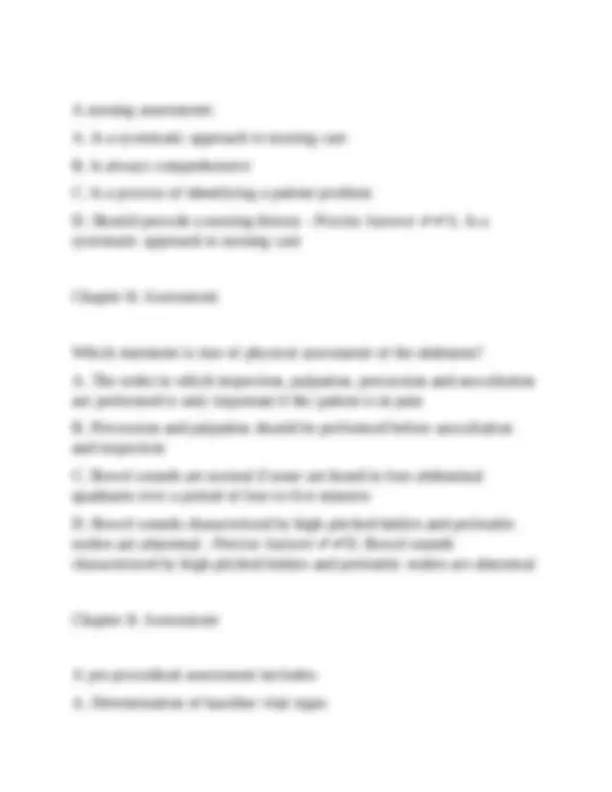
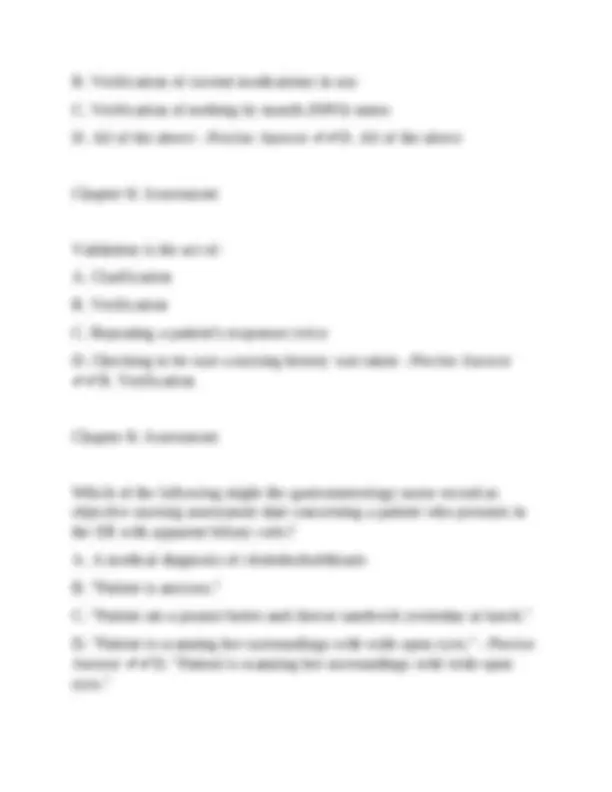
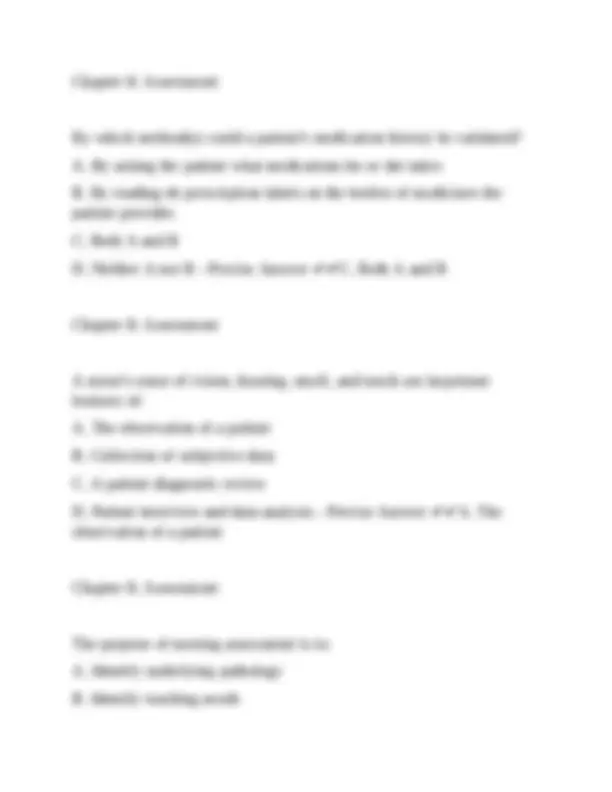
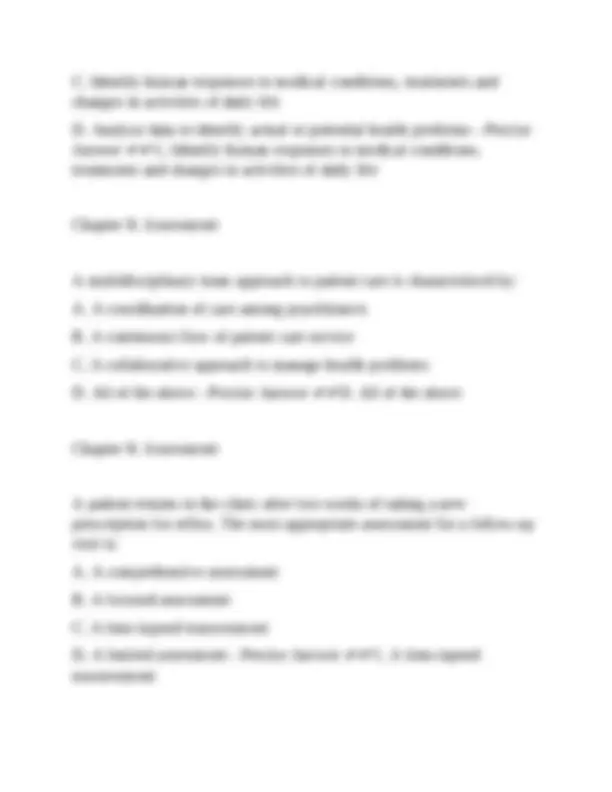
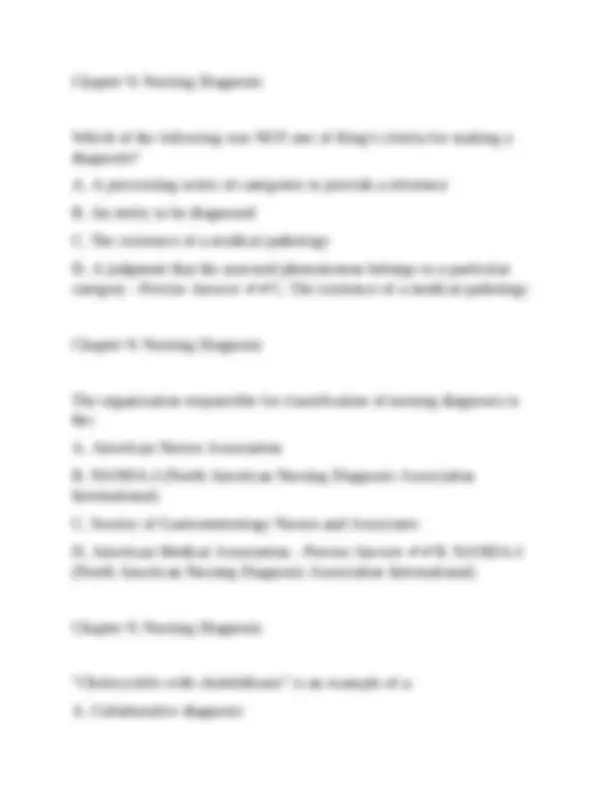
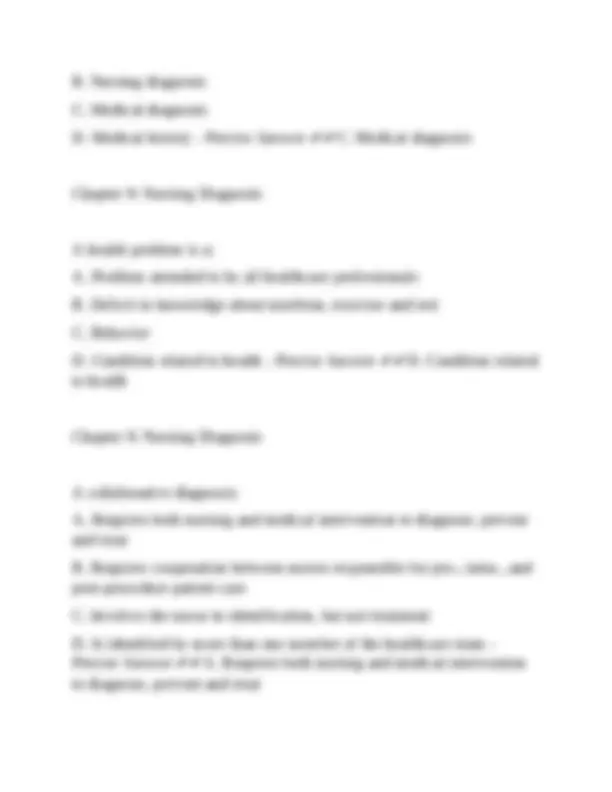
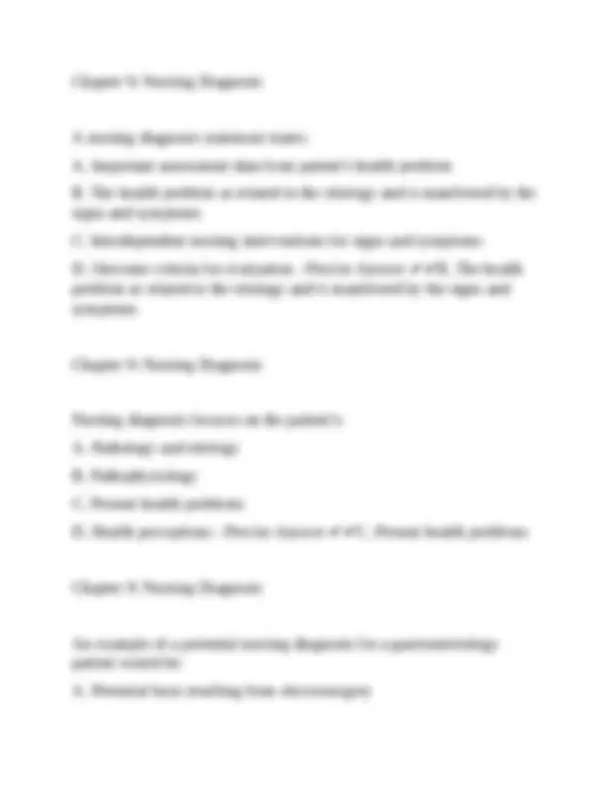
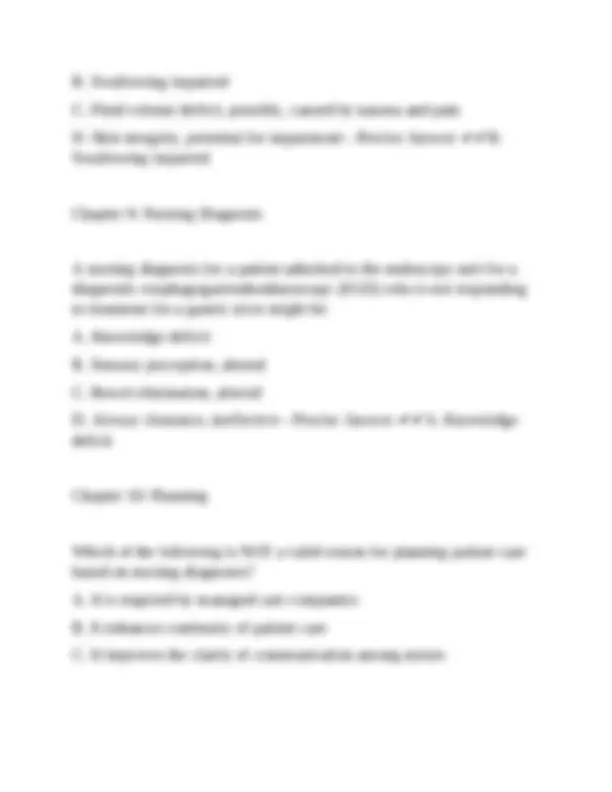
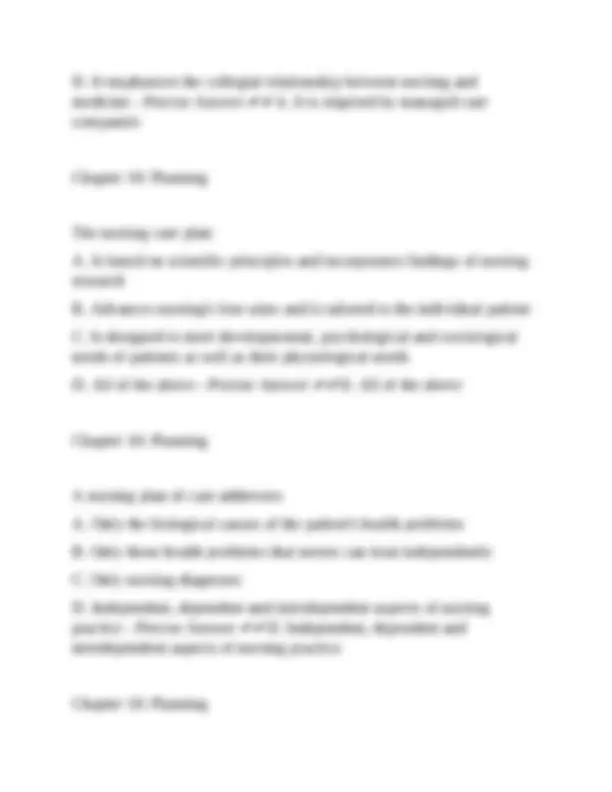
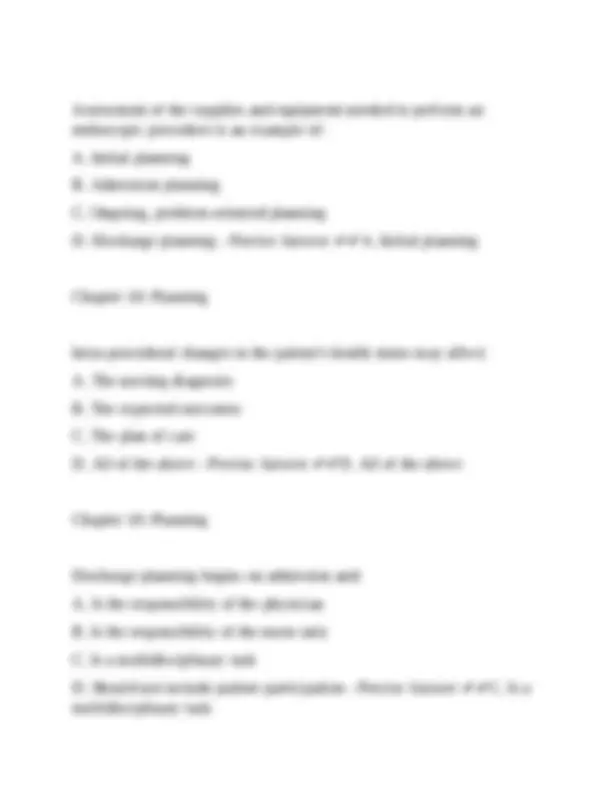
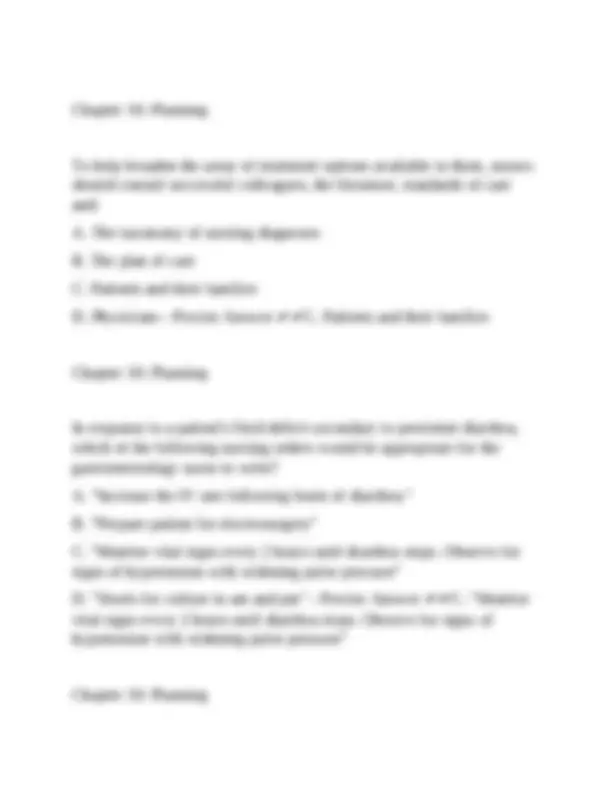
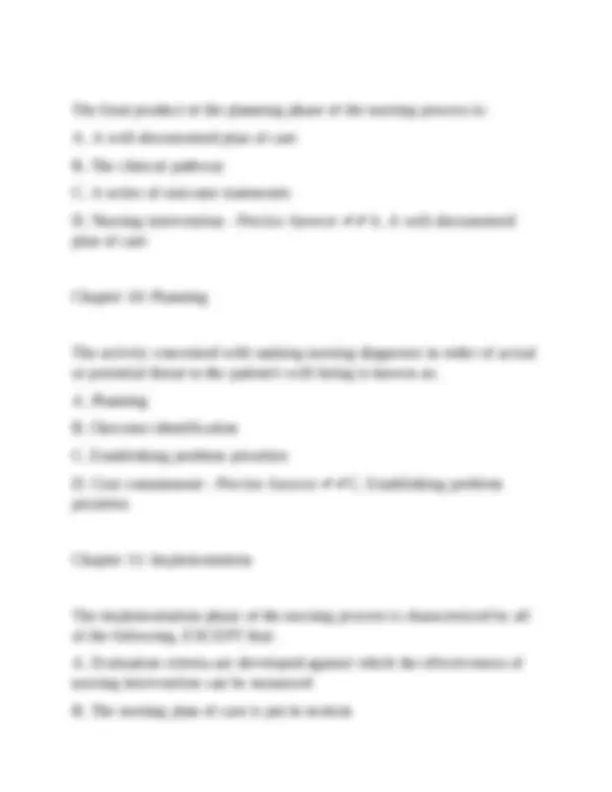
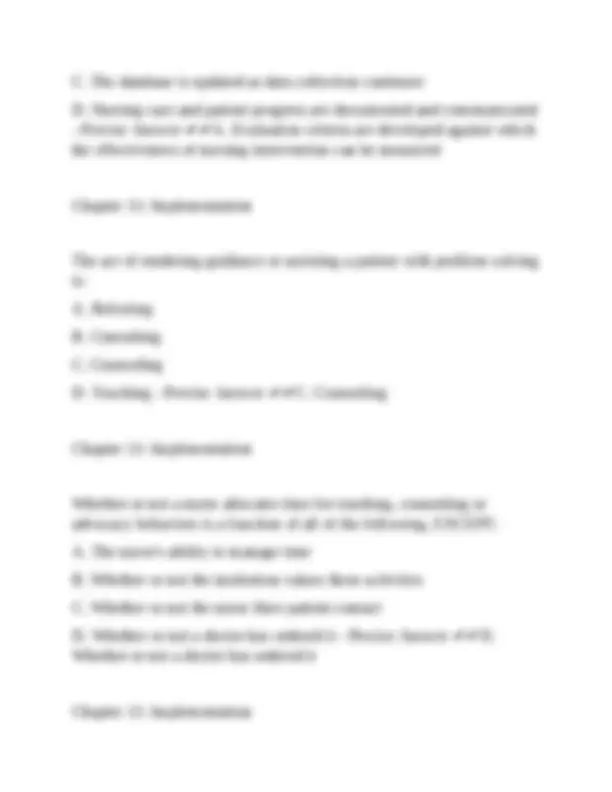
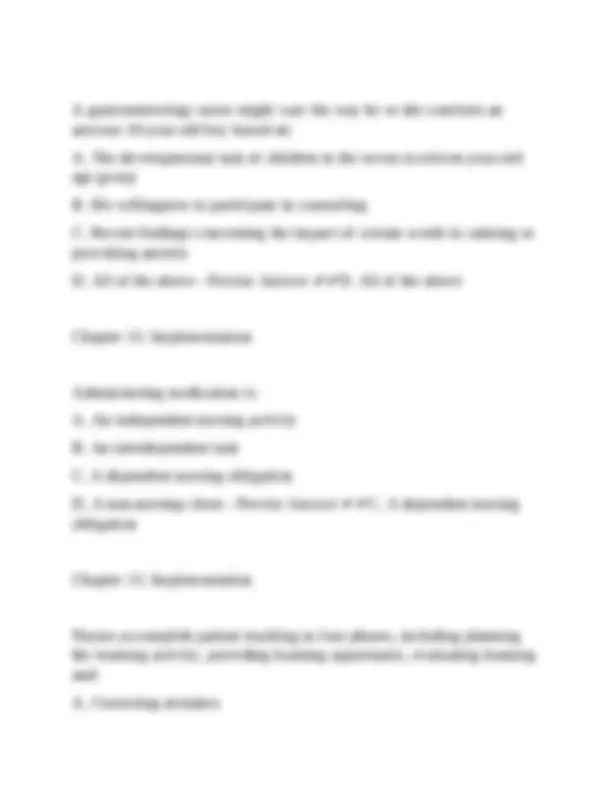
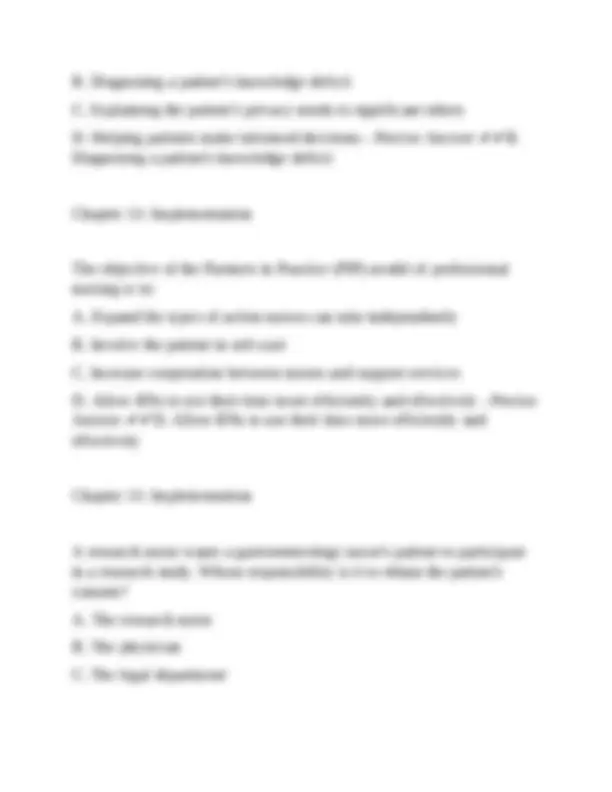
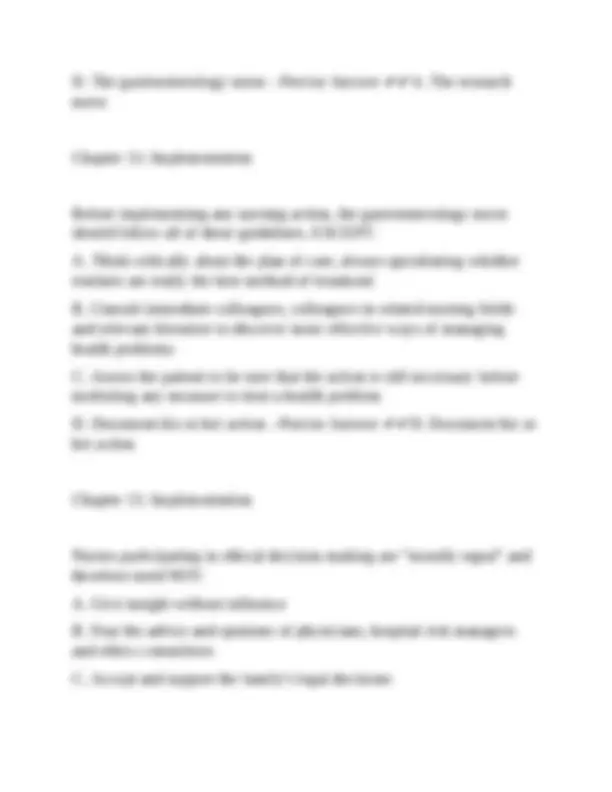
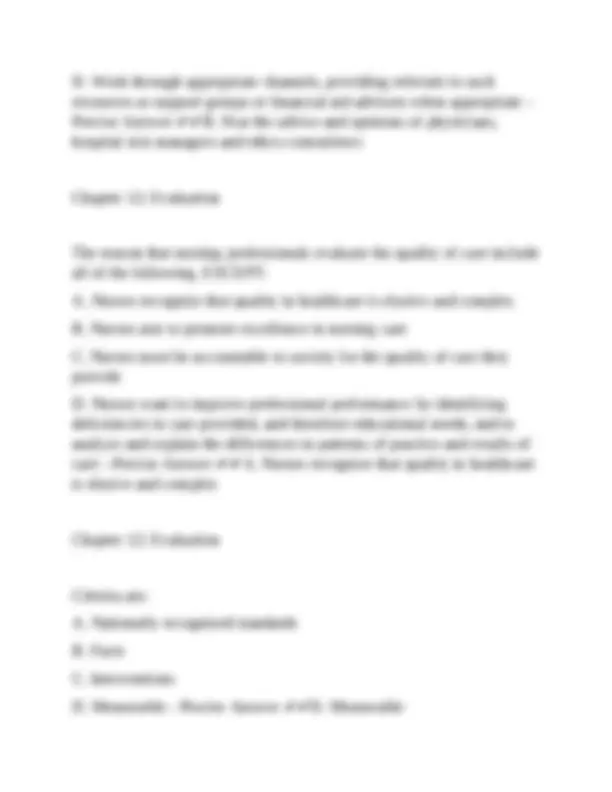
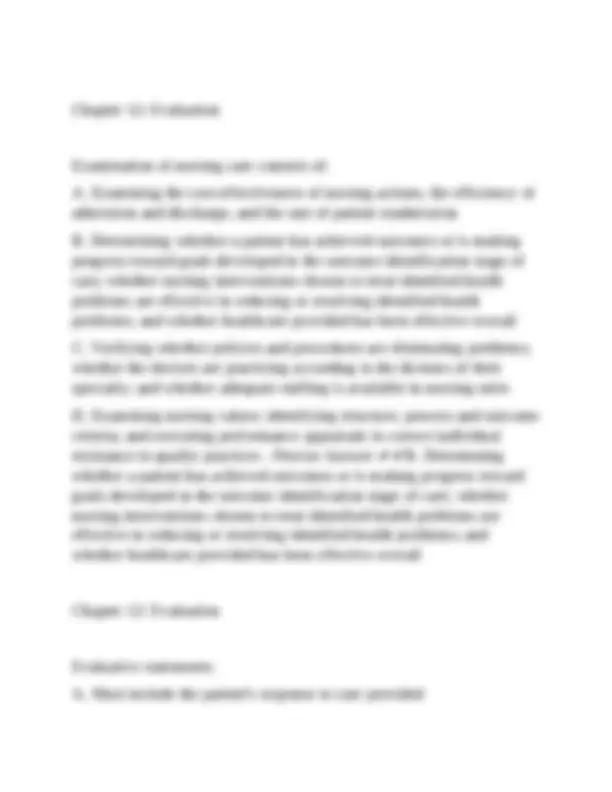
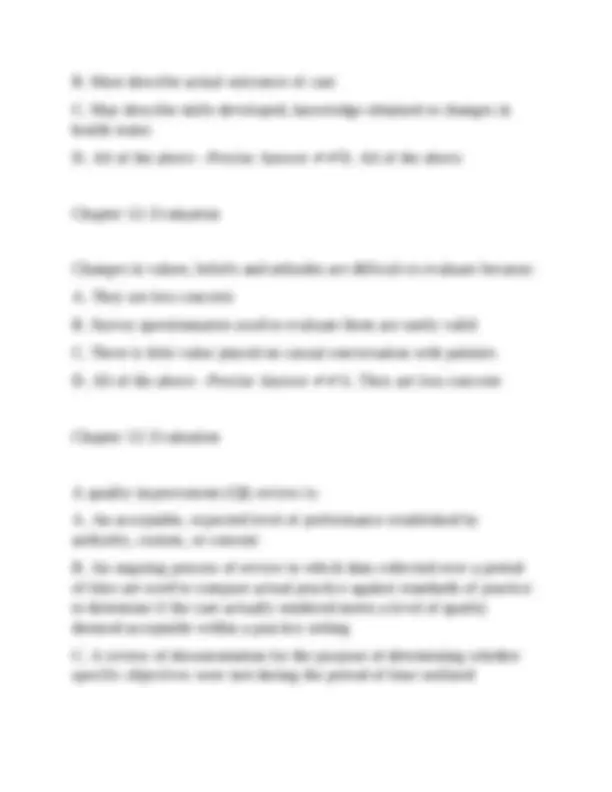
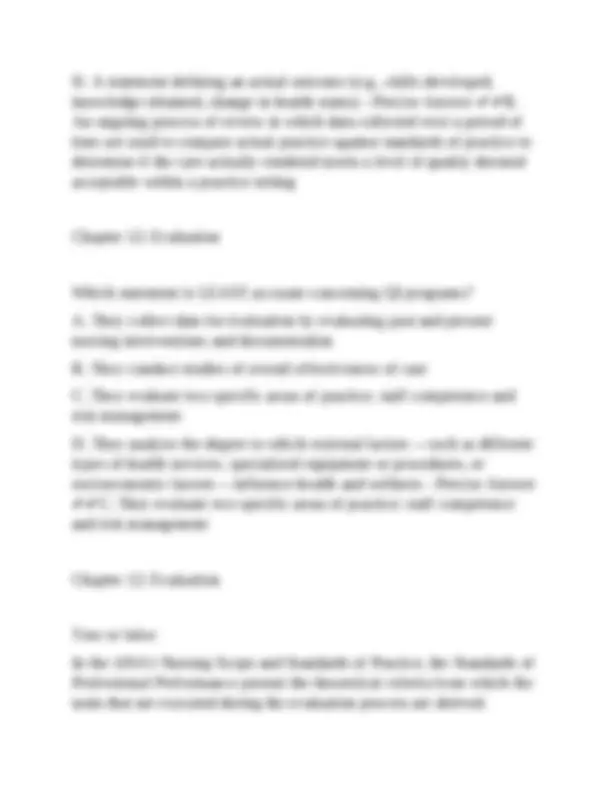
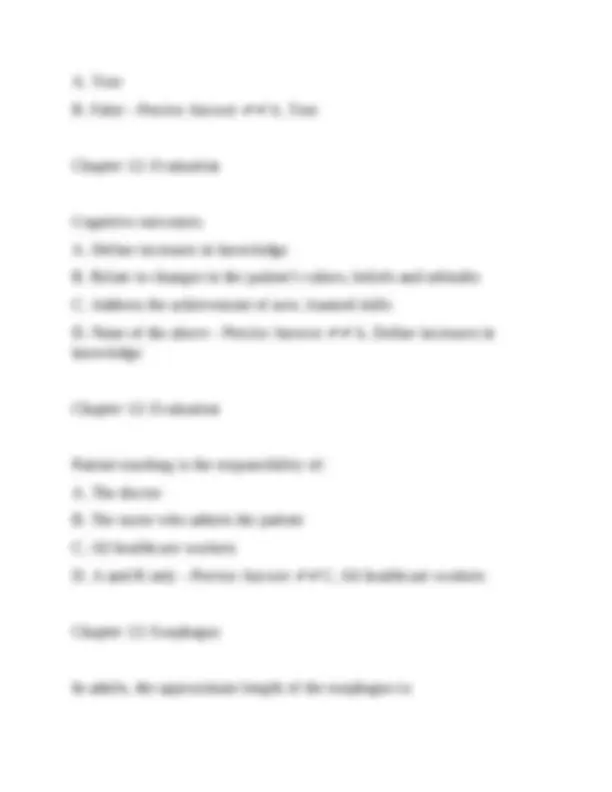
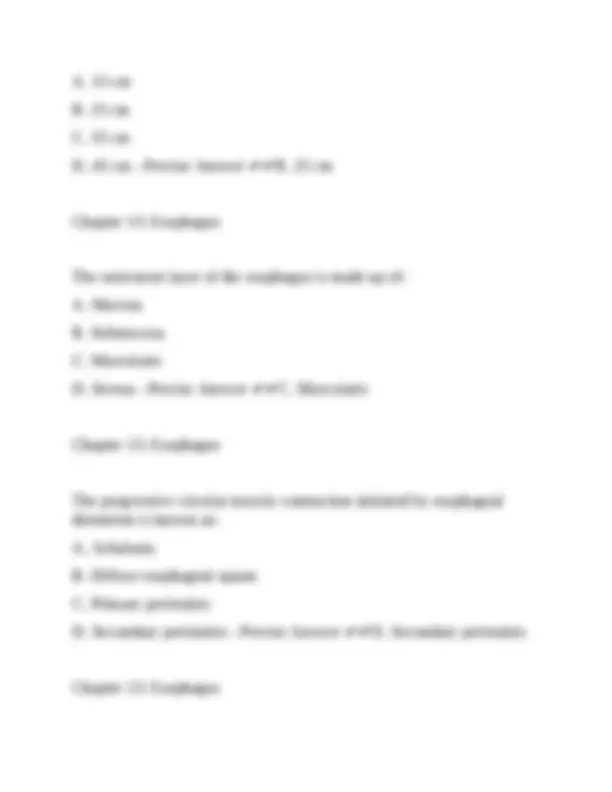
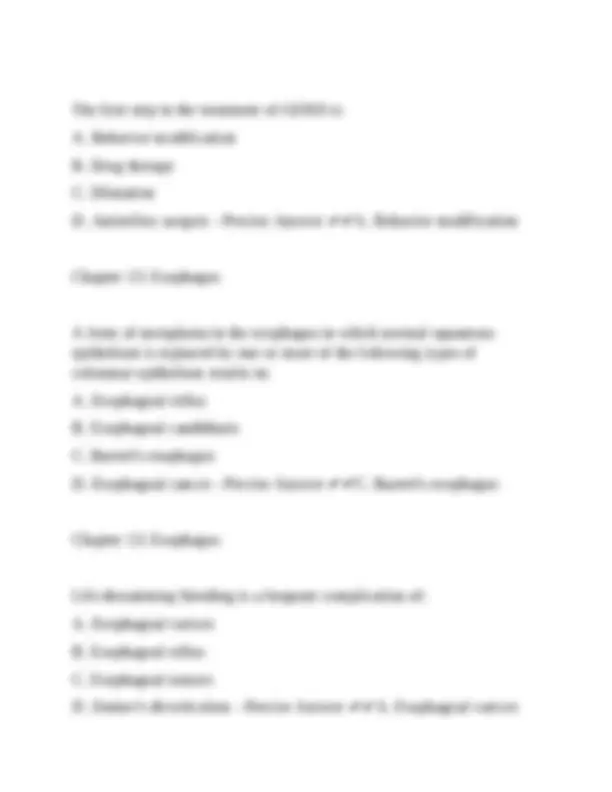
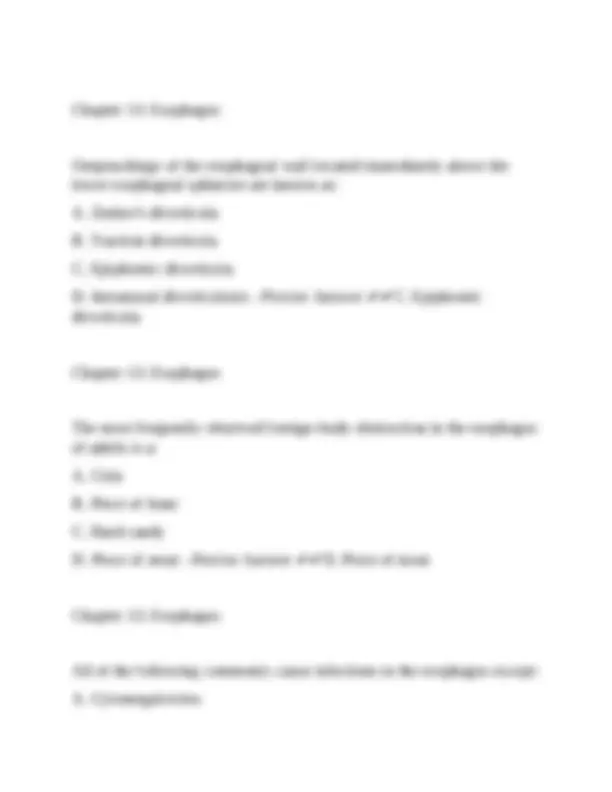
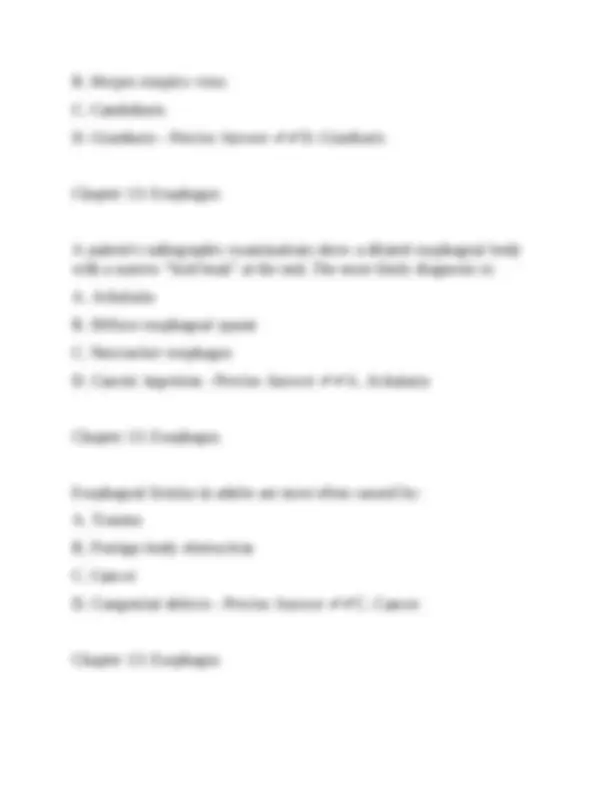
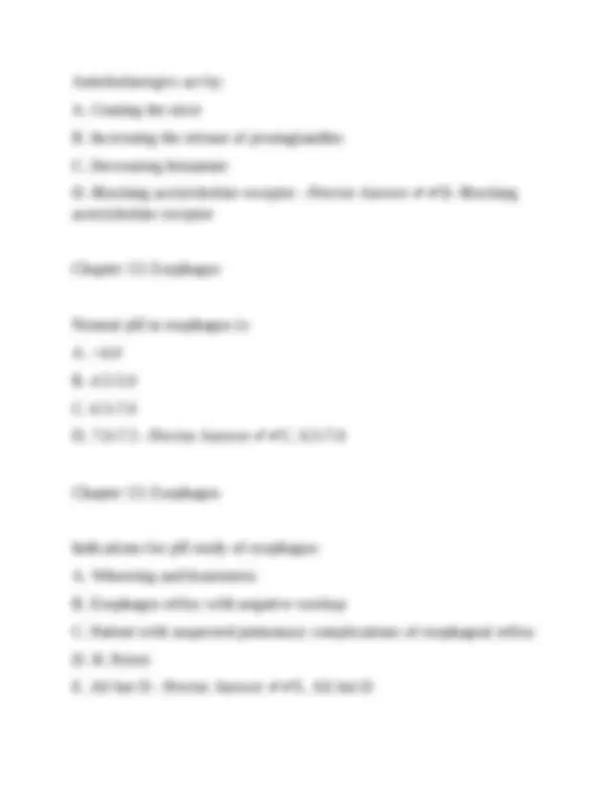
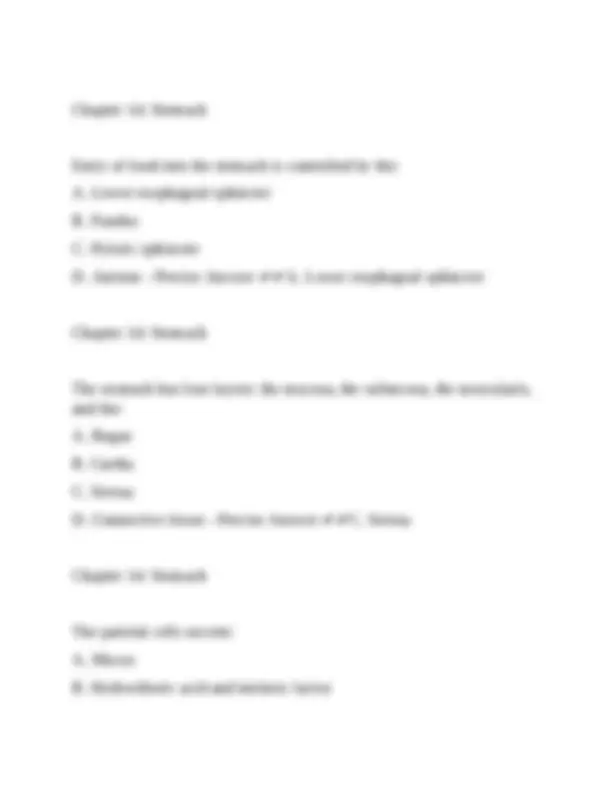
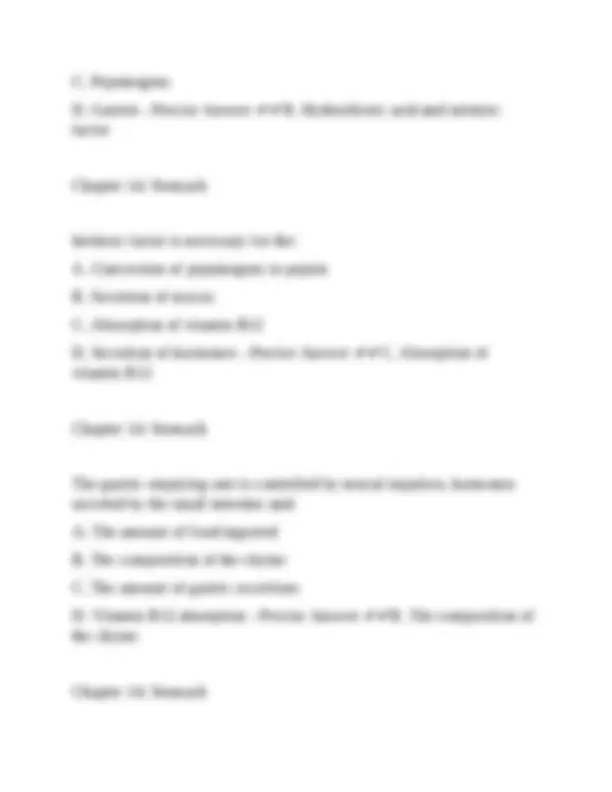
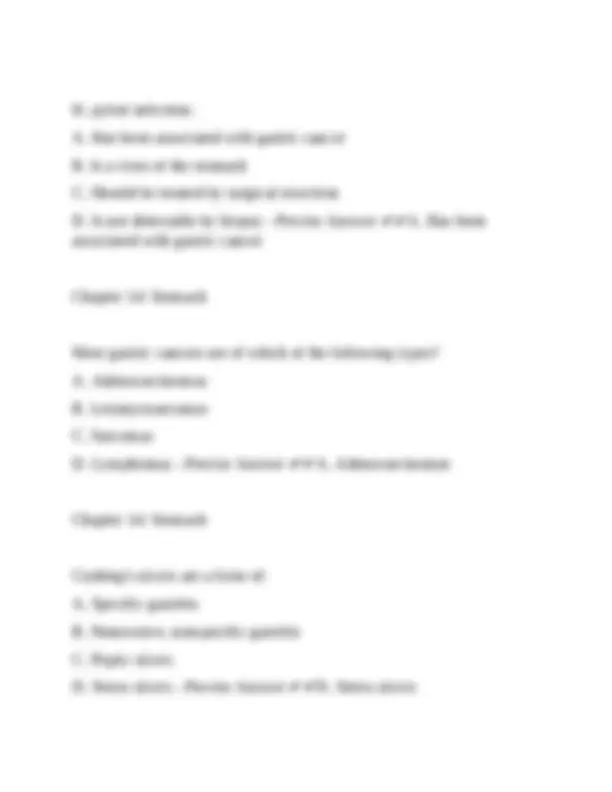
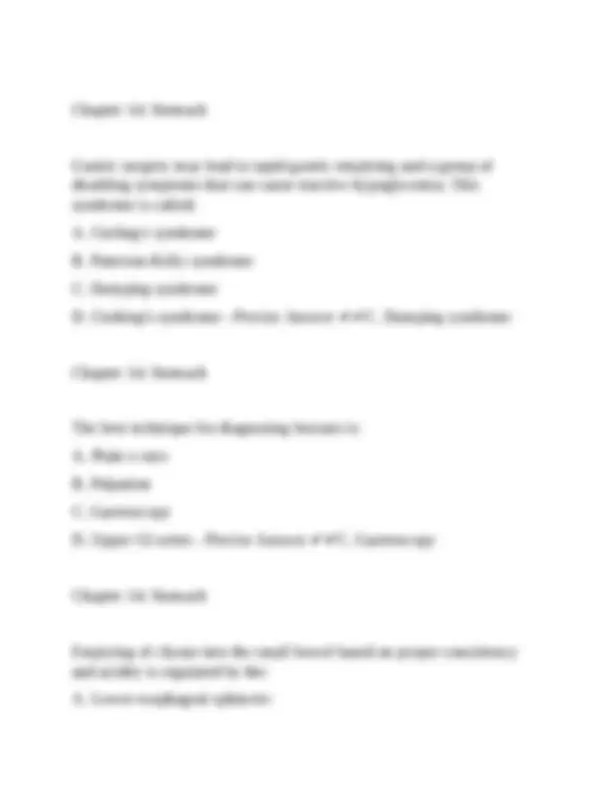
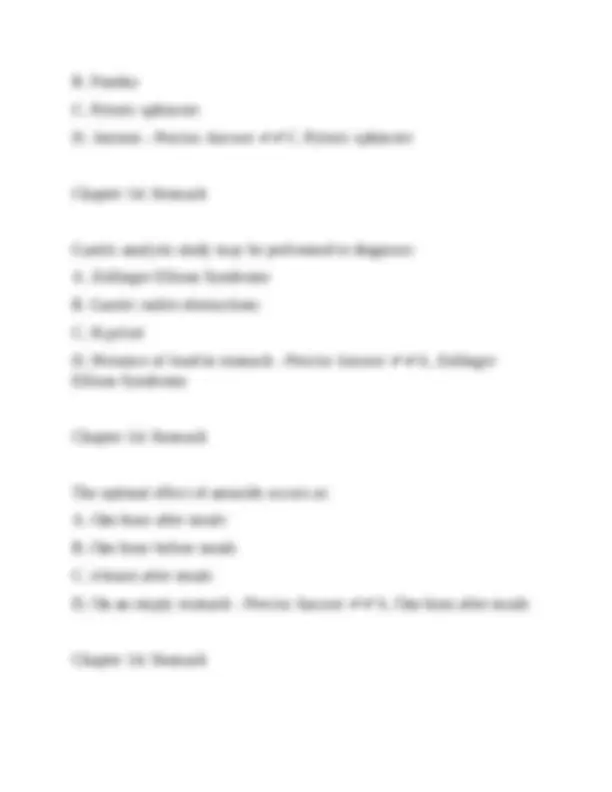
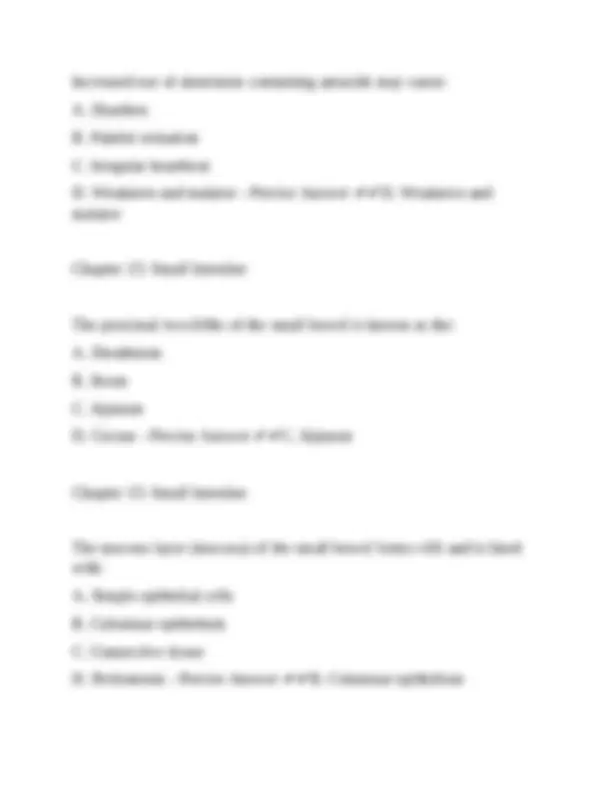
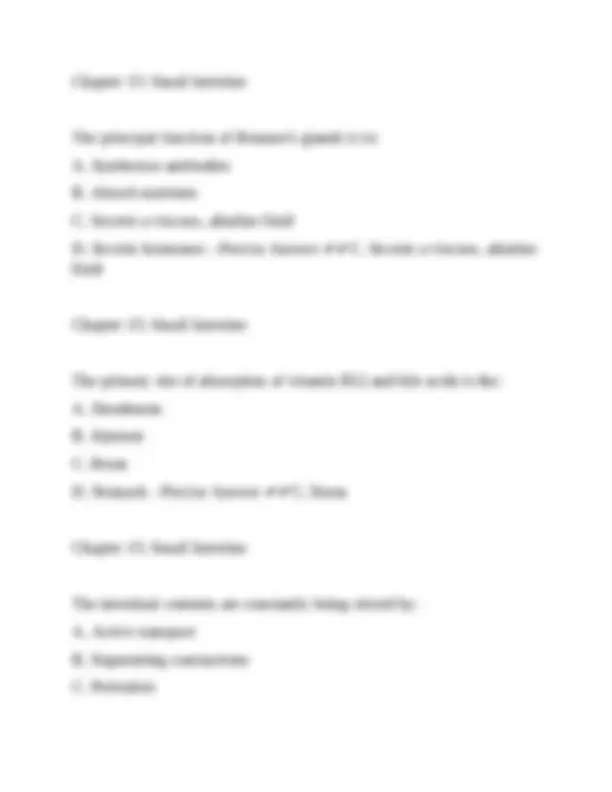
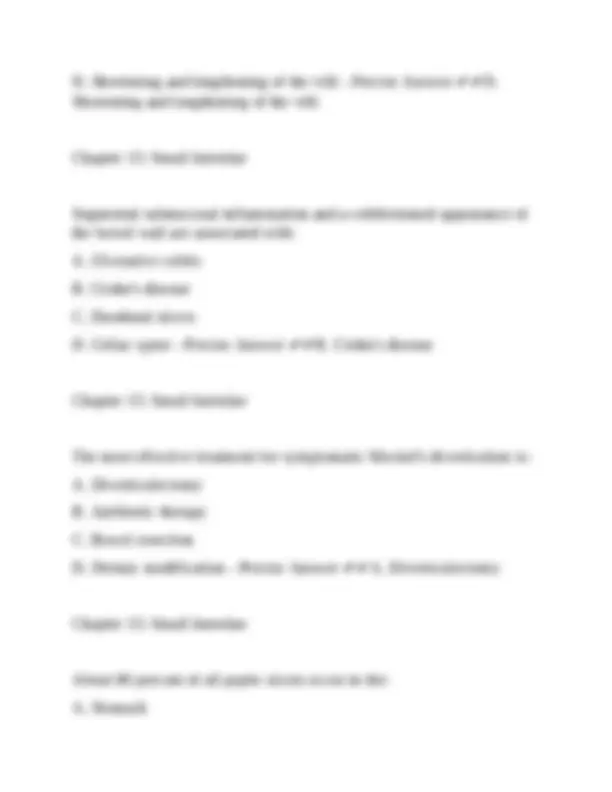
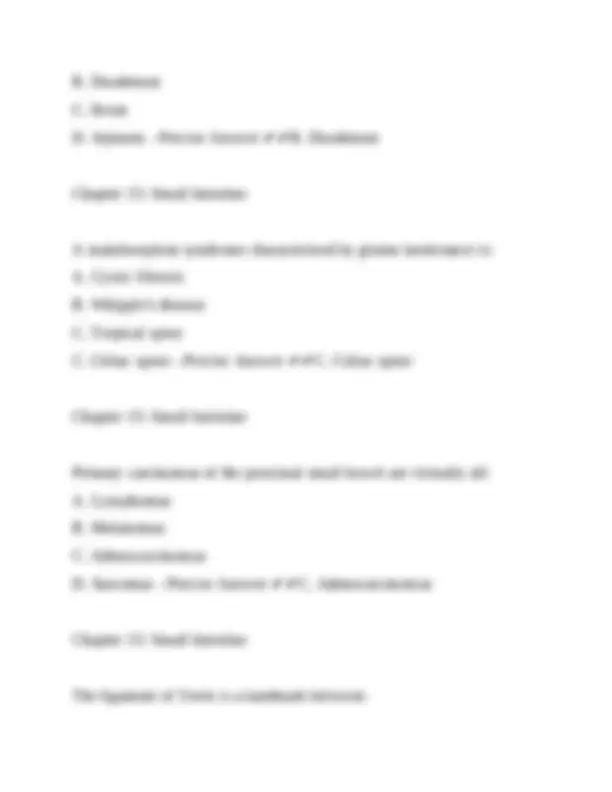
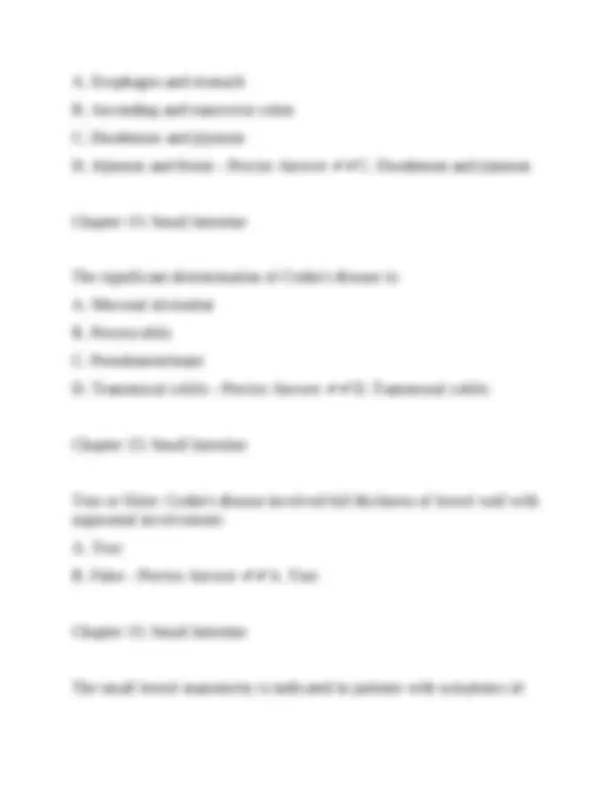
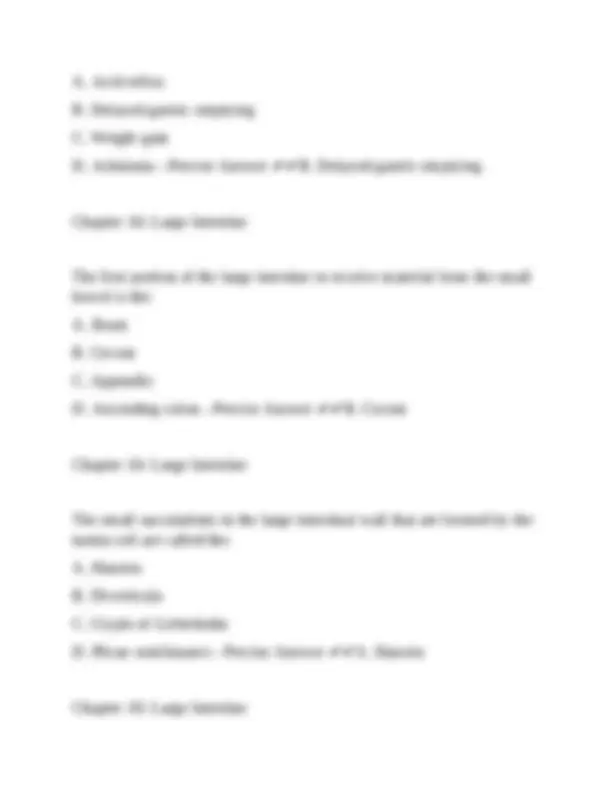
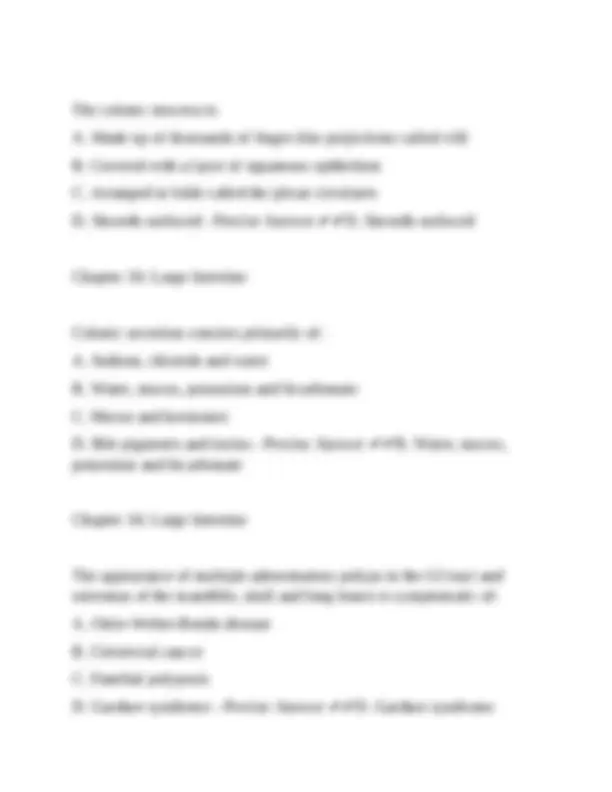

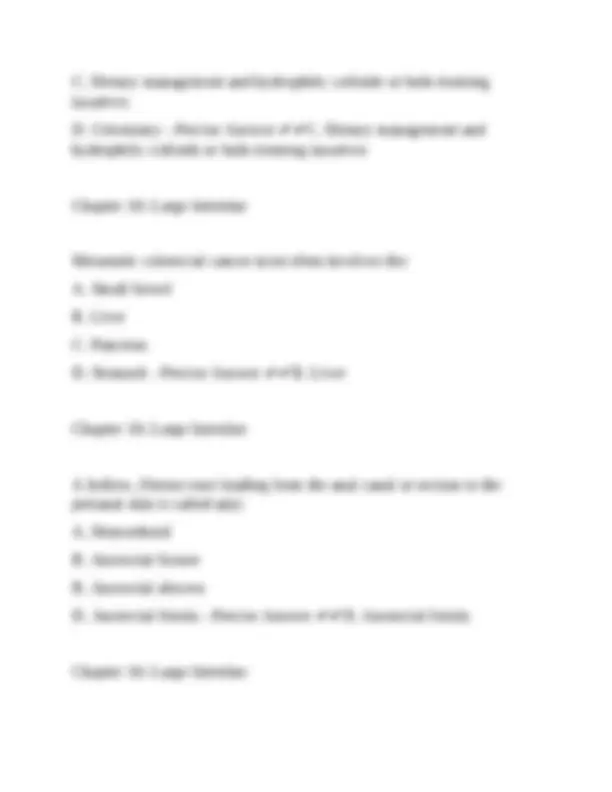
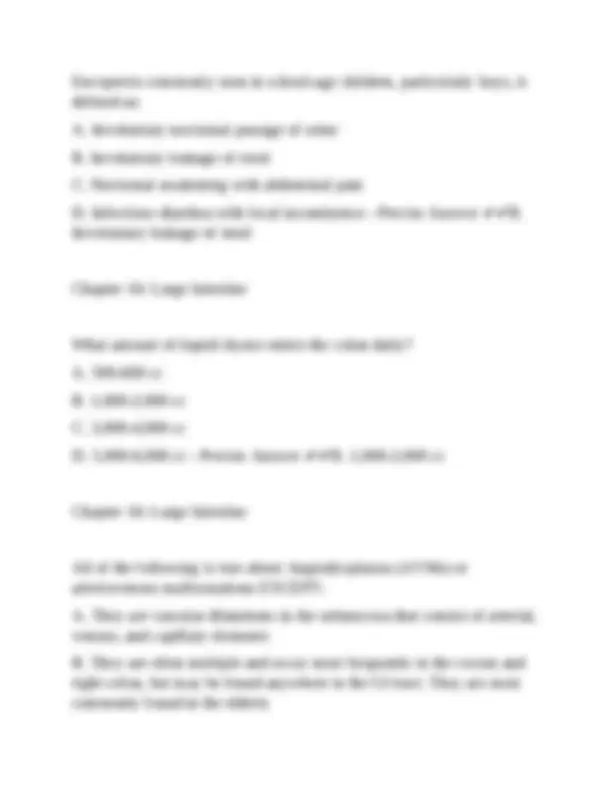
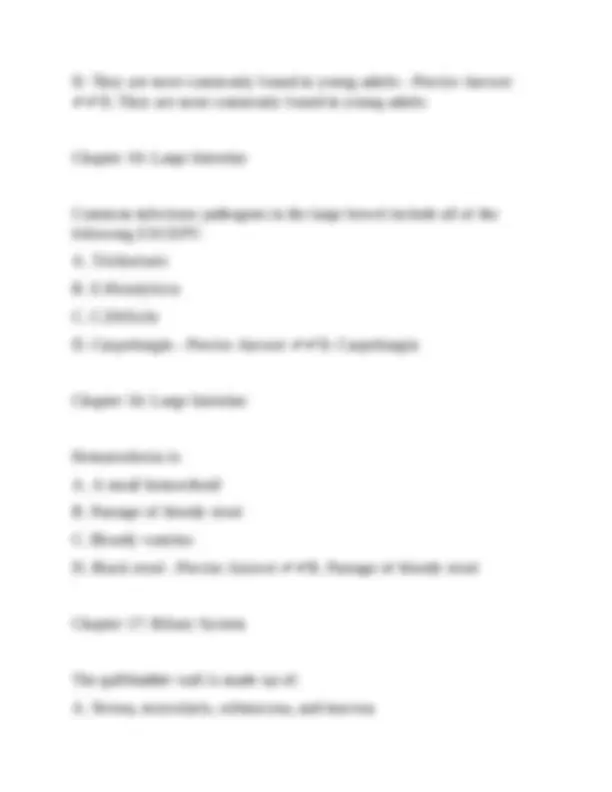
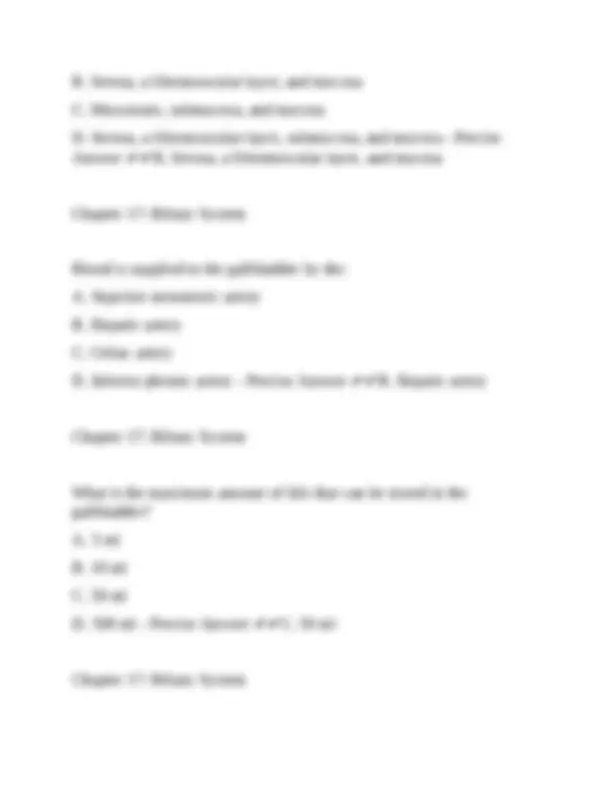
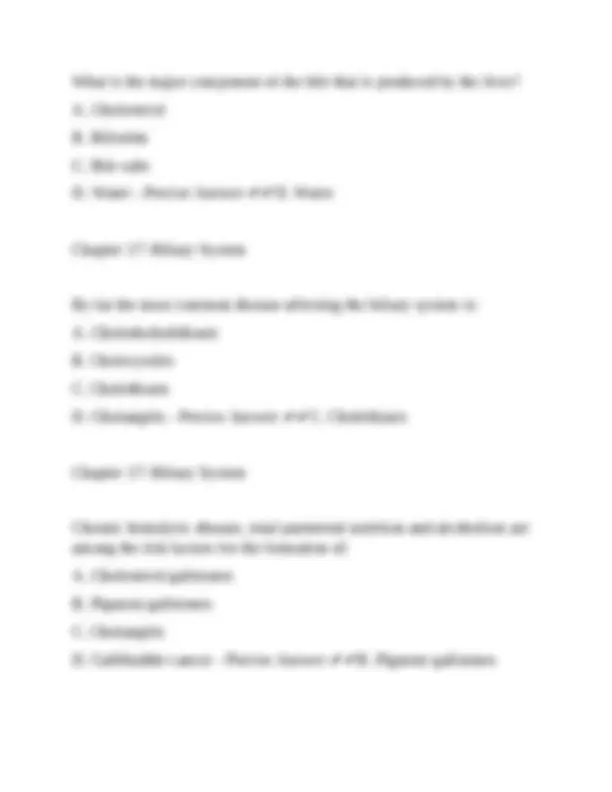
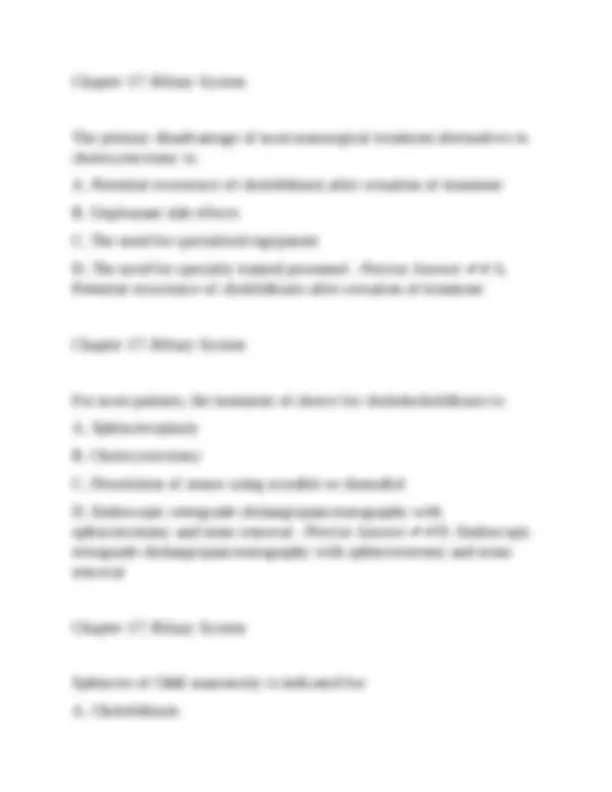
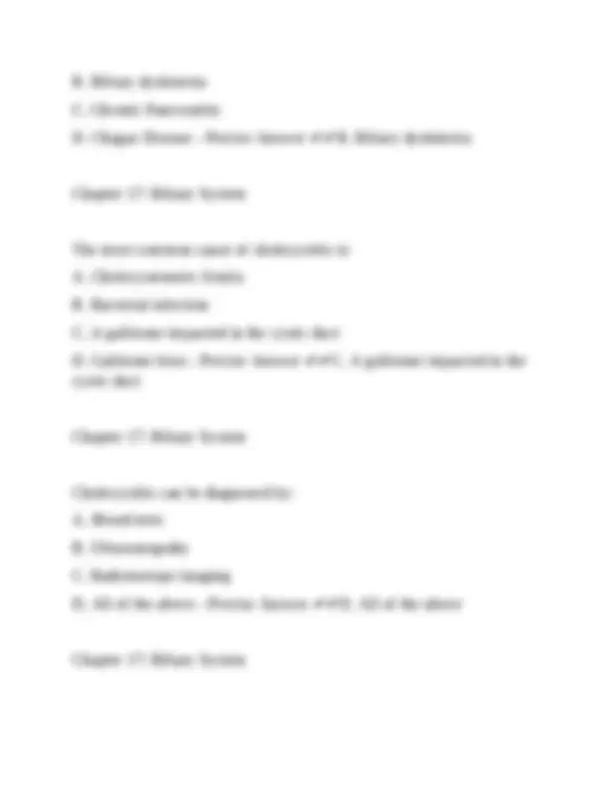
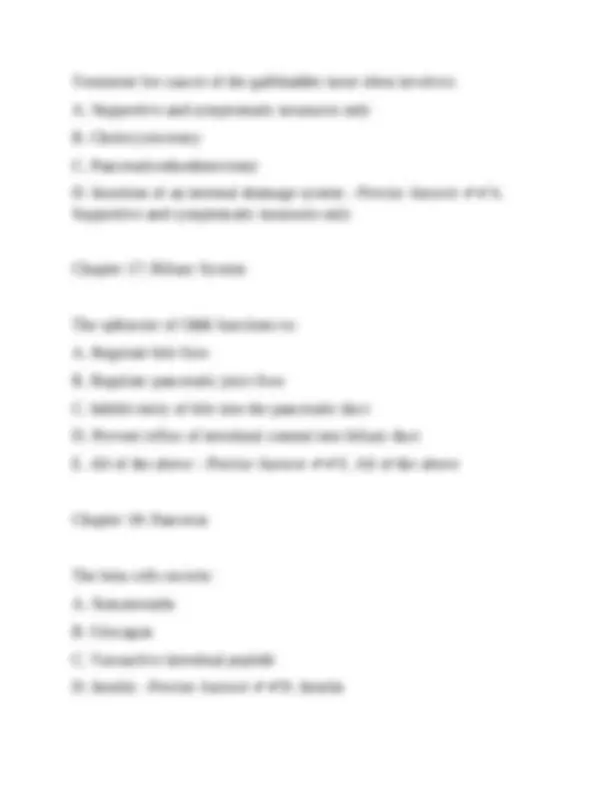
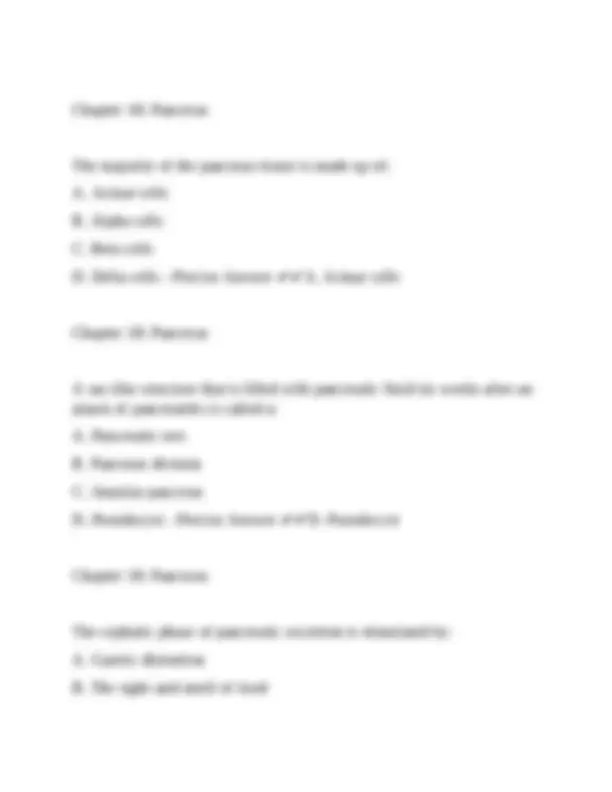
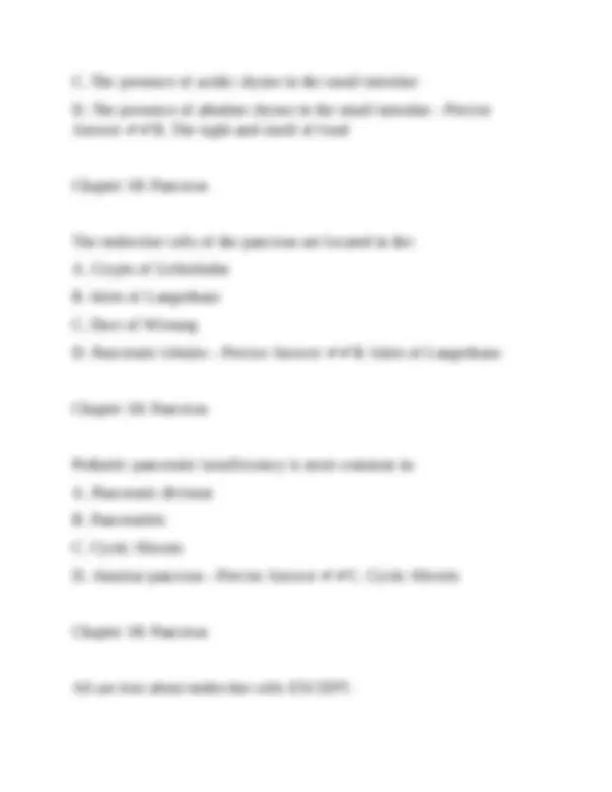
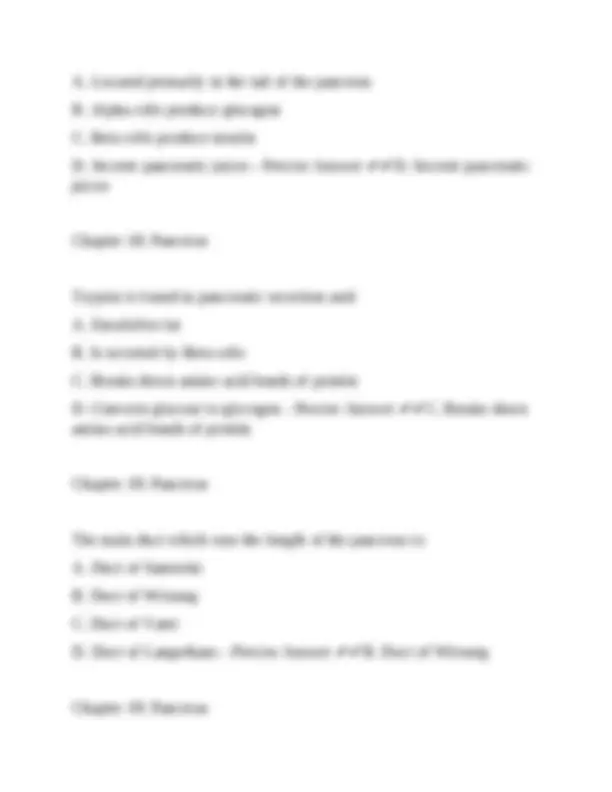
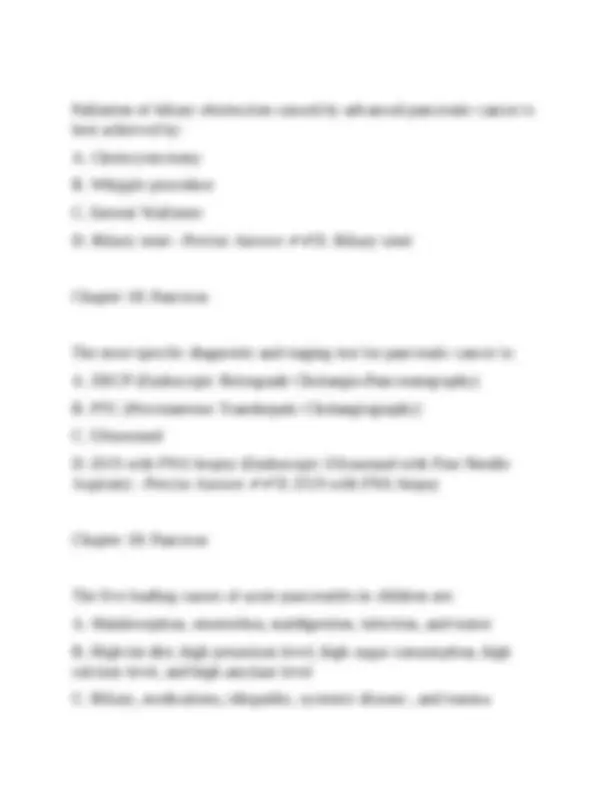
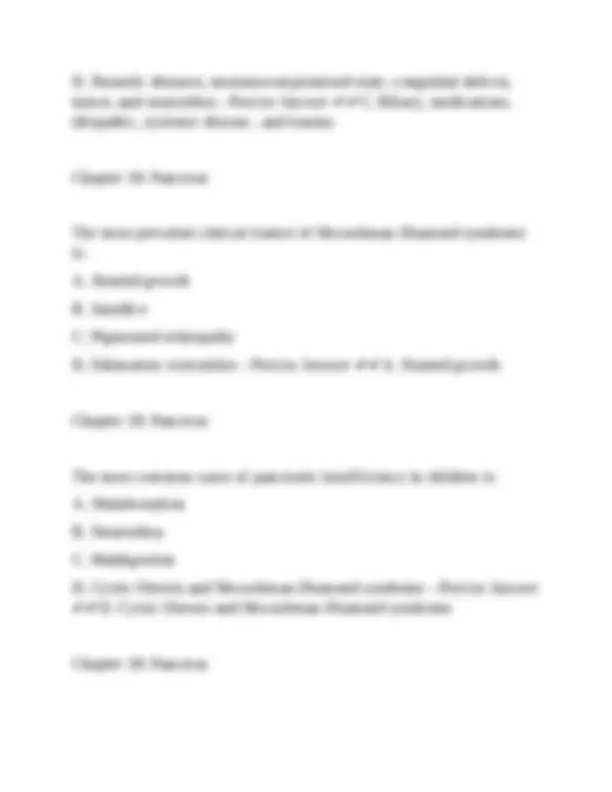
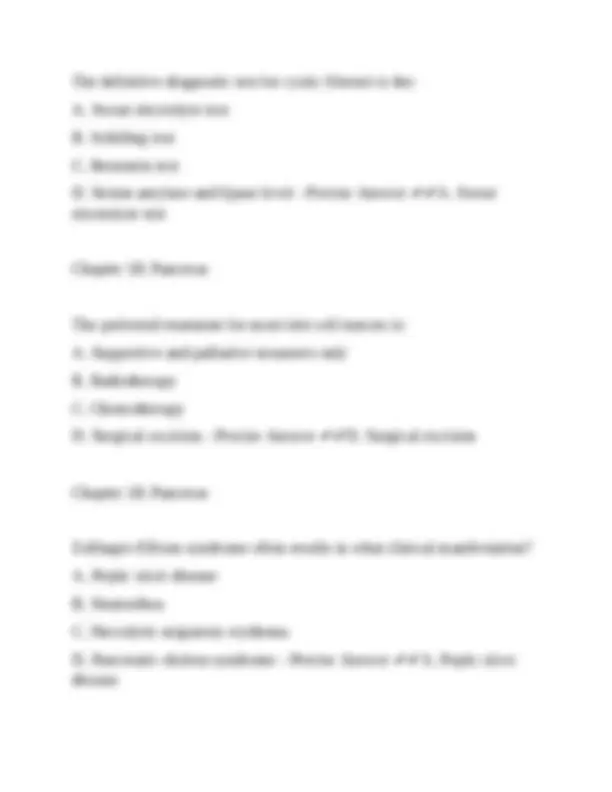
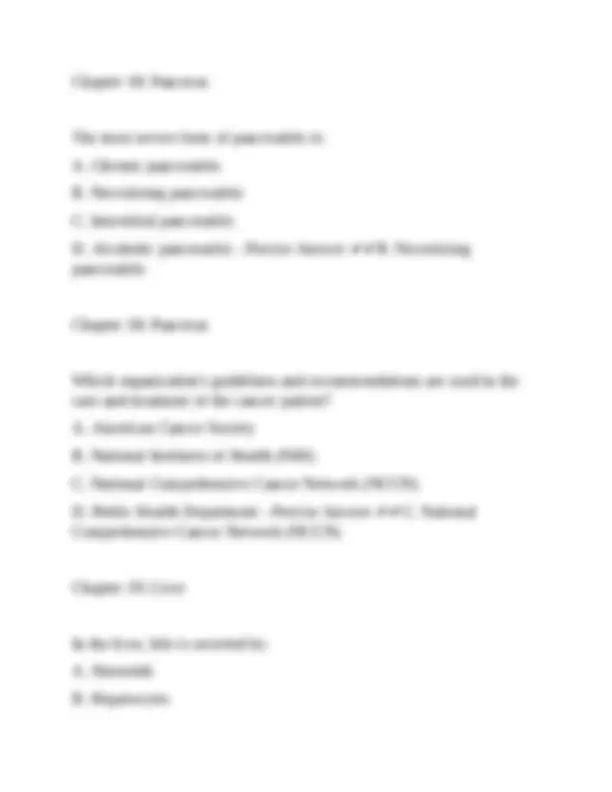
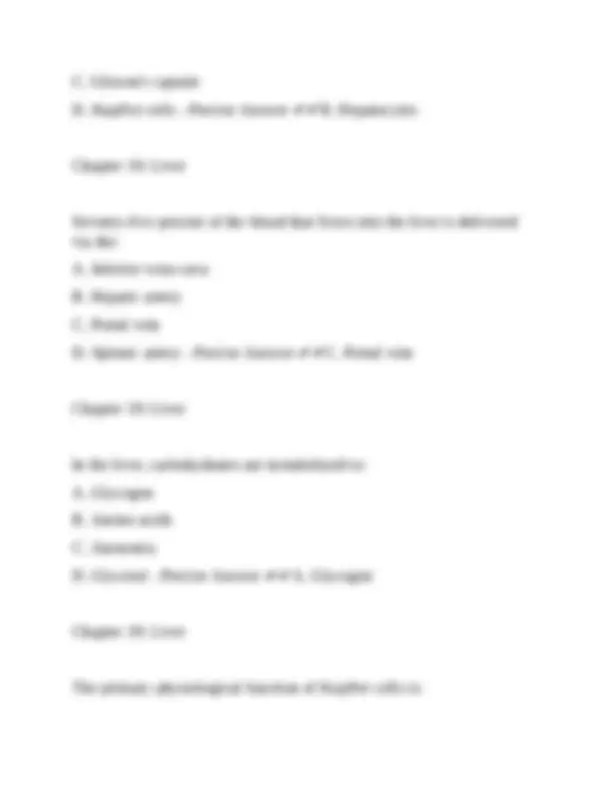
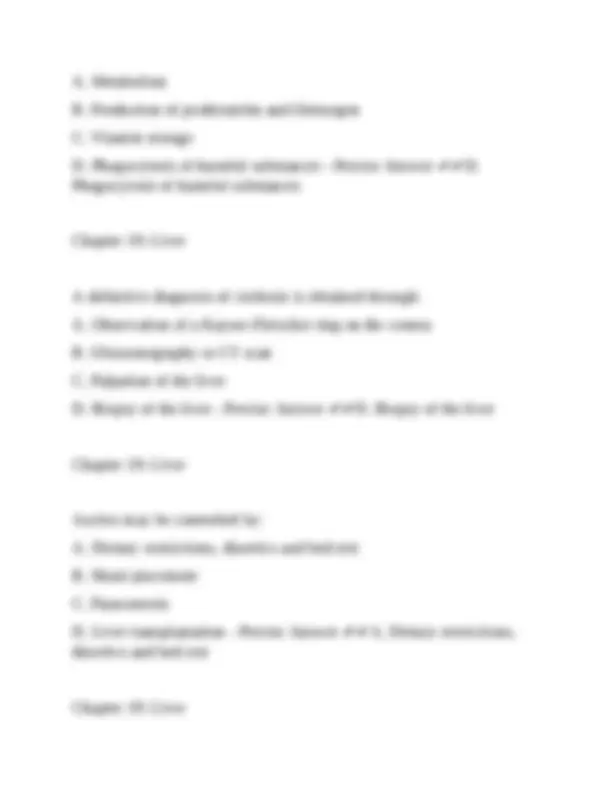
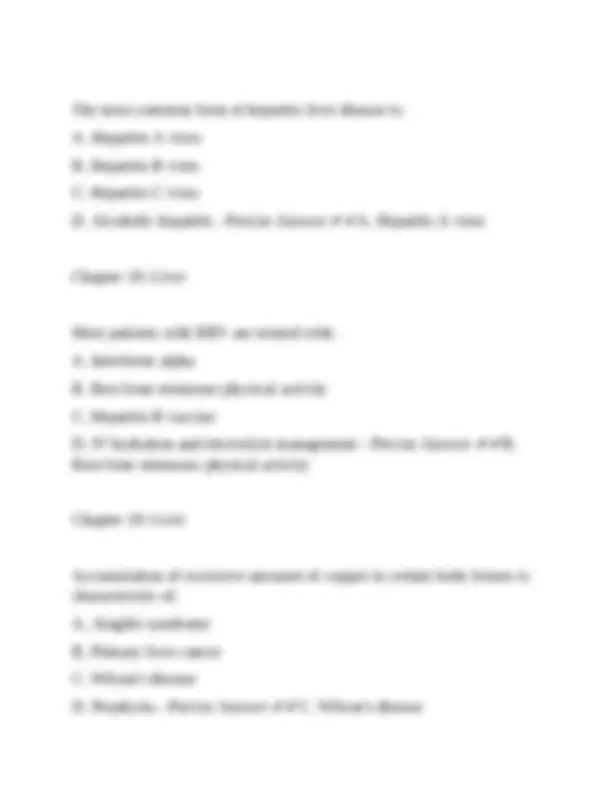
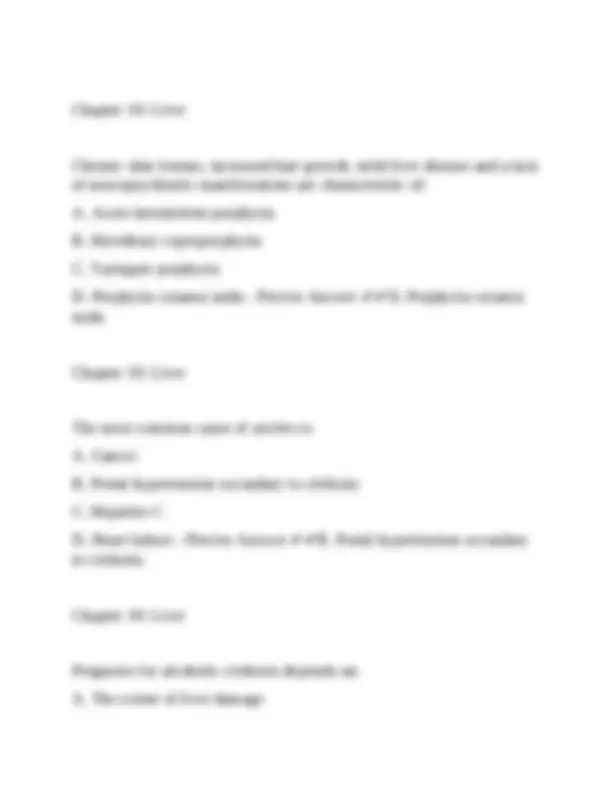
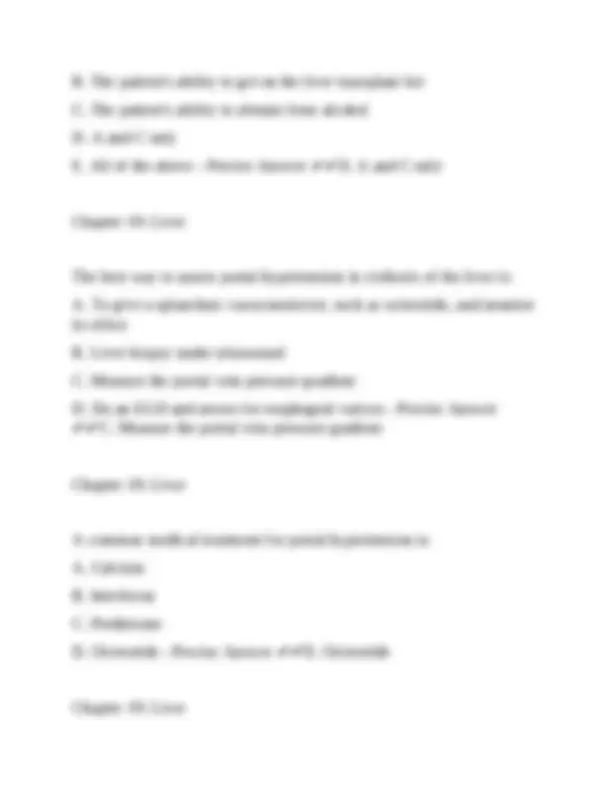
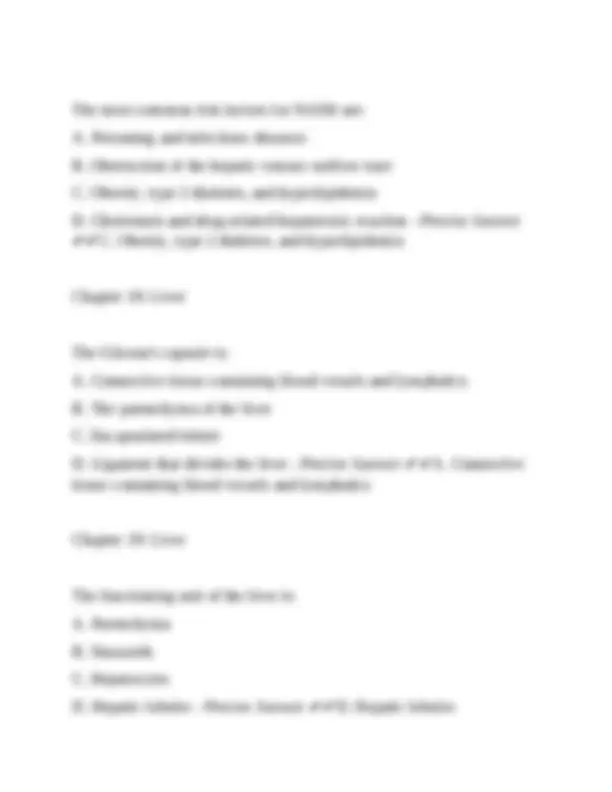

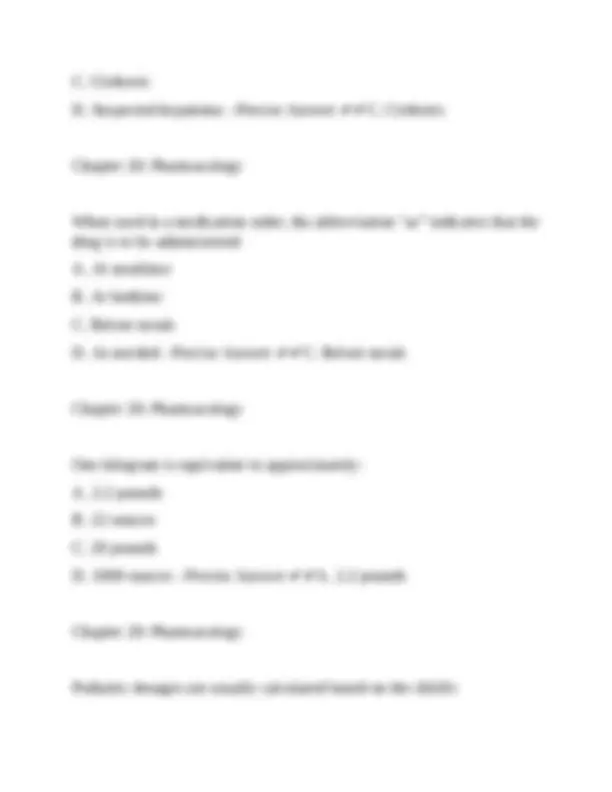


Study with the several resources on Docsity

Earn points by helping other students or get them with a premium plan


Prepare for your exams
Study with the several resources on Docsity

Earn points to download
Earn points by helping other students or get them with a premium plan
Community
Ask the community for help and clear up your study doubts
Discover the best universities in your country according to Docsity users
Free resources
Download our free guides on studying techniques, anxiety management strategies, and thesis advice from Docsity tutors
Key topics related to the pancreas and liver, including the structure and function of these organs, common diseases and conditions, and diagnostic and treatment approaches. The pancreas section covers topics such as the main pancreatic duct, causes of acute pancreatitis, pancreatic insufficiency, and islet cell tumors. The liver section discusses bile secretion, blood flow, and the mechanism of action of antacids. Detailed information that could be useful for students studying anatomy, physiology, gastroenterology, or related medical fields. It covers a range of important questions that could be answered by analyzing the content, and the information presented is likely to be relevant for both university-level and high school-level studies.
Typology: Exams
1 / 153

This page cannot be seen from the preview
Don't miss anything!





























































































Chapter 1: The Gastroenterology Nurse and Associate The first recorded gastrointestinal assistant was: A. Florence Nightingale B. Frances Reiter C. Gabriele Schindler D. BC Charaka - Precise Answer ✔✔C. Gabriele Schindler Chapter 1: The Gastroenterology Nurse and Associate The individual who first developed the fiberoptic telescope used for gastroenterology procedures was: A. Hippocrates B. Hopkins C. Schindler D. Baird - Precise Answer ✔✔B. Hopkins Chapter 1: The Gastroenterology Nurse and Associate
During what period was medicine so far advanced that they had what is equivalent to today's subspecialties? A. Egyptians B. Pre-Christian era C. Middle Ages D. Greeks and Romans - Precise Answer ✔✔A. Egyptians Chapter 1: The Gastroenterology Nurse and Associate The rationale for the rapid adoption of fiberoptic instruments includes: A. Simplicity, ease of use and patient safety B. Complex lens system and noncoherent bundles C. Perfect imaging and ease of use D. Combination of noncoherent bundles and coherent bundles to make a perfect image - Precise Answer ✔✔A. Simplicity, ease of use and patient safety Chapter 1: The Gastroenterology Nurse and Associate The first Society of Gastrointestinal Assistants (SGA) was formed in what year? A. 1968 B. 1976 C. 1972
Chapter 1: The Gastroenterology Nurse and Associate A general requirement for a recently graduated nurse who is interested in practicing gastroenterology nursing is: A. To work for one year on a medical-surgical unit to gain experience B. To work for a private gastroenterology physician to gain knowledge of diagnosis and procedures C. To work in a special procedures unit for one year D. To work in an ambulatory care unit to practice skills for one year - Precise Answer ✔✔A. To work for one year on a medical-surgical unit to gain experience Chapter 1: The Gastroenterology Nurse and Associate Initial assessment of patients on arrival to the gastroenterology unit is usually the responsibility of the: A. Physician B. Nurse manager C. Staff nurse (RN) D. Associate - Precise Answer ✔✔C. Staff nurse (RN) Chapter 2: Leadership Roles & Management of the Gastroenterology Department
The theoretical framework upon which departmental management is based involves: A. Coordination of the five functions of management B. Getting things done through others C. Micromanaging all tasks in the unit D. Ensuring that the employee knows to whom to report - Precise Answer ✔✔A. Coordination of the five functions of management Chapter 2: Leadership Roles & Management of the Gastroenterology Department ______________________________ outlines a course of action that is realistic for the unit and involves the development of a purpose, philosophy, goals, and objectives for the unit. A. Planning B. Organizing C. Directing D. Staffing - Precise Answer ✔✔A. Planning Chapter 2: Leadership Roles & Management of the Gastroenterology Department Managerial components of "Planning" include: A. Forecasting and managing the budget B. Maintaining a structure of working relationships
Chapter 2: Leadership Roles & Management of the Gastroenterology Department To determine the staffing budget, it will be necessary to calculate: A. Full-time equivalents and flexible staff B. Volume of procedures and required staff C. Qualifications of the required staff D. Volume and cost of procedures - Precise Answer ✔✔B. Volume of procedures and required staff Chapter 2: Leadership Roles & Management of the Gastroenterology Department The conscious use of the current best practice in making decisions about patient care is defined as: A. The tasks unassigned to staff B. The tasks delegated to staff C. Evidence-based practice D. The tasks of other managers - Precise Answer ✔✔C. Evidence-based practice Chapter 2: Leadership Roles & Management of the Gastroenterology Department
In an operating budget salaries, overtime, benefits, and medical-surgical supplies are usually considered: A. Indirect expenses B. Fixed assets C. Direct expenses D. Capital budget items - Precise Answer ✔✔C. Direct expenses Chapter 2: Leadership Roles & Management of the Gastroenterology Department The process of getting tasks accomplished with the help of others and directed toward common organizational and departmental goals is defined as: A. Planning B. Management C. Staffing D. Directing - Precise Answer ✔✔B. Management Chapter 2: Leadership Roles & Management of the Gastroenterology Department This term represents the use of computer technology to support nursing and includes clinical practice, administration, education and research. A. Nursing management B. Nursing administrators
A. Hepatitis C virus B. Gram-negative bacteria or mycobacteria C. Pseudomonas aeruginosa D. Human immunodeficiency virus (HIV) - Precise Answer ✔✔B. Gram-negative bacteria or mycobacteria Chapter 3: Infection Control According to the Spaulding classification system, examples of critical items are: A. Injection needles B. Endoscopes C. Biopsy forceps D. A & C E. B & C - Precise Answer ✔✔D. A & C Chapter 3: Infection Control The only circumstance in which sterilization of an endoscope is required is: A. For patients with known HIV, hepatitis C or hepatitis B B. For use of the endoscope in a sterile operative field - Precise Answer ✔✔B. For use of the endoscope in a sterile operative field
Chapter 3: Infection Control True or False: Procedure rooms should be separate from reprocessing rooms. - Precise Answer ✔✔True Chapter 3: Infection Control The standard of care for reprocessing of GI endoscopes is: A. Sterilization B. High-level disinfection - Precise Answer ✔✔B. High-level disinfection Chapter 3: Infection Control Agents approved for high-level disinfection include: A. Green soap B. Isopropyl alcohol C. Glutaraldehyde D. Hydrogen peroxide E. Peracetic acid F. Ortho-phthalaldehyde (OPA) G. C, D, E, & F - Precise Answer ✔✔G. C, D, E, & F (Glutaraldehyde, Hydrogen Peroxide, Peracetic acid, and Ortho-phthalaldehyde)
D. EPA - Precise Answer ✔✔D. EPA Chapter 3: Infection Control Safe Medical Device Act of 1990 is under the jurisdiction of: A. FDA B. CDC C. ASTM D. EPA - Precise Answer ✔✔A. FDA Chapter 3: Infection Control According to Spaulding's classifications as endoscope is: A. Non-critical item B. Semi-critical item C. Critical item - Precise Answer ✔✔B. Semi-critical item Chapter 3: Infection Control The first four steps for reprocessing flexible endoscopes are:
A. Precleaning, manual cleaning, rinse after cleaning, high-level disinfection B. Precleaning, leak testing, rinse after cleaning, drying C. Precleaning, leak testing, manual cleaning, rinse after cleaning D. Leak testing, rinse after cleaning, drying, storage - Precise Answer ✔✔C. Precleaning, leak testing, manual cleaning, rinse after cleaning Chapter 3: Infection Control Visual inspection is safety stop to ensure the endoscope is visually clean before proceeding to the next step of high-level disinfection. A. True B. False - Precise Answer ✔✔A. True Chapter 3: Infection Control PPE includes: A. Impermeable gowns B. Gloves C. Protective eyewear D. Mask E. All of the above - Precise Answer ✔✔E. All of the above Chapter 4: Environmental Safety
C. Use nonreflective instruments D. All of the above - Precise Answer ✔✔D. All of the above Chapter 4: Environmental Safety For laser procedures, the optical density of the protective eyewear used is determined by: A. The physician's preference B. The procedure that will be performed C. Institutional policies and procedures D. The wavelength of the laser being used - Precise Answer ✔✔D. The wavelength of the laser being used Chapter 4: Environmental Safety When ionizing radiation is in use, pregnant healthcare workers should: A. Wear a lead-lined apron, thyroid collar and protective eyewear in accordance with institutional guidelines B. Wear a film badge C. Limit the dose to the embryo or fetus to 0.5 rem (500m rem) over the entire pregnancy, with a uniform monthly exposure rate to the embryo/fetus of not more than 50m rem/month D. All of the above - Precise Answer ✔✔C. Limit the dose to the embryo or fetus to 0.5 rem (500m rem) over the entire pregnancy, with a
uniform monthly exposure rate to the embryo/fetus of not more than 50m rem/month Chapter 4: Environmental Safety If a piece of electrical equipment malfunctions, it should be: A. Fixed by gastroenterology personnel B. Removed from service and reported according to institutional policy C. Report to the FDA D. Both B and C - Precise Answer ✔✔D. Both B and C Chapter 4: Environmental Safety If glutaraldehyde accidentally comes in contact with a healthcare worker's skin, he or she should: A. Wash the area thoroughly B. Rinse the area with water only C. Apply burn ointment D. Cover the area with a bandage - Precise Answer ✔✔A. Wash the area thoroughly Chapter 4: Environmental Safety
D. Both A and B - Precise Answer ✔✔A. Schedule the procedure the first of the day Chapter 4: Environmental Safety GI unit specific hazards include: A. Radiation B. Medications C. Laser D. All of the above - Precise Answer ✔✔D. All of the above Chapter 4: Environmental Safety The federal regulatory agency responsible for enforcing safety and health regulations in the workplace is: A. OSHA - Occupational Health and Safety Administration B. NIOSH - National Institute of Occupational Safety and Health C. Department of Health D. ACGIH - American Conference of Government - Precise Answer ✔✔A. OSHA - Occupational Health and Safety Administration Chapter 4: Environmental Safety Nonionizing radiation includes:
A. Gamma Rays B. X-rays C. Fluoro D. Ultraviolet - Precise Answer ✔✔D. Ultraviolet Chapter 4: Environmental Safety All are components of laser safety except: A. No flammable or combustible material should be near the laser site B. The foot pedal may be accessible to all staff C. Use instruments with non-reflective coating D. A laser in use warning sign must be placed on the outside of the door